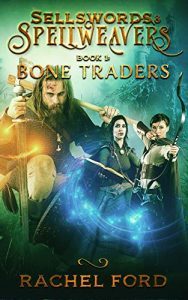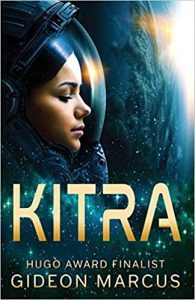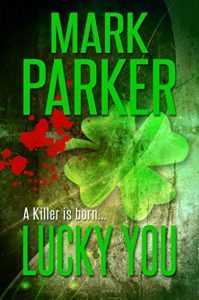Cora Buhlert's Blog, page 59
April 2, 2020
Star Trek Picard offers up space battles, stirring speeches, murder synths and meditations on life and death in part 2 of “Et in Arcadia Ego”
Welcome to my final episode by episode review of Star Trek Picard for season 1. Previous installments may be found here.
Warning: Spoilers behind the cut!
The season 1 finale of Star Trek Picard once more opens without the by now customary flashback – unless you count the “Previously on Star Trek Picard” recap – and plunges us right in medias res again by picking up where part 1 of “Et in Arcadia Ego” left off, when the Synths of Coppelius place Picard under arrest and decide to call in the advanced synthetic lifeforms who have left the message/warning on the planet with the eight suns wherein they promise to help other synthetic lifeforms by wiping out those pesky organic lifeforms.
Picard is locked up, though the Synths do give him a nice room with a view. Soji briefly visits Picard to explain her point of view, that her people – people whom she didn’t even know existed until three episodes ago – are always hunted and beleaguered and in danger and currently have a fleet of 218 Romulan warbirds coming for them, which is why it’s totally justified to wipe out all organic life in the universe up to and including Jean Luc Picard. Picard meanwhile tries to convince Soji of his point of view and is about as successful at that as he has been at convincing others of his point of view all season long, namely not at all.
The huge problem with the two part finale of Star Trek Picard becomes apparent right here, for the Synths of Coppelius simply aren’t very likable. Personally, I don’t give a flying fart whether the Romulans nuke them from orbit, because the Synths have it coming, once they decided to go all Terminator and call in the tentacled monster Synths from another universe. The Synths of Coppelius are simply genocidal jerks, so why should I sympathise with their plight again? Because the Romulans and the Federation are prejudiced against them? Sorry, but nope. Picard does his best to explain that the Synths are like children, that they don’t know what they’re doing and that being created and raised by two such morally questionable figures as Bruce Maddox and Dr. Alton Inigo Soong doesn’t help either. Which is all fine and well, but the Synths are fully willing to wipe out all organic life in the universe. Jean-Luc Picard is obviously a better person than me, because IMO the behaviour of the Synths in the last two episodes proves the Zhat Vash right.
I also find that I don’t like Soji anymore. I liked her all right in the earlier episodes of the season, when she was a bewildered young woman who was beginning to realise that her whole life had been a lie, though Soji is probably the least interesting character of the main cast. But once Soji awakened and turned all murder synth, I don’t particularly like her anymore. Yes, she may be a sort of spiritual daughter of Data, but she has none of the qualities that made Data so compelling. Plus, Data never tried to wipe out all organic life in the universe. Not even his evil twin brother Lore did that.
Dr. Agnes Jurati’s enthusiasm for the Synths of Coppelius is also rapidly cooling. At the end of part 1, she did vote for calling in the Lovecraftian monster synths from beyond, apparently unaware that this would mean her death as well. But in part 2, we learn that this was only a ruse to put Dr. Alton Inigo Soong and the Synths off guard. And so Agnes pretends to help Dr. A.I. Soong to get his android body ready to transfer Dr. Soong’s consciousness into the android body, because Dr. A.I. Soong has no intention to get killed along with all other organic life in the universe. But once Dr. Soong is busy downloading the memories of the android Arcana (supposedly murdered by Narek in part 1) as a memento for her twin sister Saga, Agnes steals the eyeball of the dead Arcana to open the retina scan coded lock and break out Picard. First Icheb and now Agnes ripping a bloody eyeball out of a dead android. Star Trek Picard‘s obsession with ripping out eyeballs mirrors the obsession of season 1 of Star Trek Discovery with cannibalism.
Agnes and Picard leg it for the La Sirena, only to find it empty. For Rios and Raffi have been partially successful in getting the La Sirena operational again thanks to a magical “visualise it and it’ll build it” tool they got from one of the Synths. However, their repair efforts are interrupted by Narek who escaped the Synth compound (with a little help from Soji’s treacherous older clone Sutra) and briefly reunited with his sister, who has been hiding out aboard the Borg Cube. I’d asummed that Narissa had been beamed aboard the Zhat Vash ship at the end of “Broken Pieces” and was now with the Romulan fleet headed by Commodore Oh, but apparently not. There is a brief hug – their last, as it will turn out – then Narek takes off with some grenades to take out the spaceship snatching orchids and the beacon the Synths built to contact the evil Lovecraftian synths from beyond.
However, Narek needs help and since the surviving Ex-Borg will be unwilling to help him after Narissa slaughtered their brethren, he heads for the La Sirena instead. Not that Raffi and Rios are particularly keen to help Narek either – after all, he is still a Zhat Vash agent and broke Soji’s heart, too. Raffi even refer to him as “abusive Romulan boyfriend”. But Raffi and Rios are at least willing to listen to Narek. Elnor, who followed Narek, isn’t particularly willing to listen, since he doesn’t like Narek, but has no choice, since Narek answers his traditional challenge “Please, my friend, choose to live” with “I very much choose to live.”
And so Raffi, Rios, Elnor and Narek sit around a campfire outside the La Sirena, while Narek tells them that the Synths are planning to call in a power that will exterminate everybody. Narek also recounts the Romulan end times myth of the Destroyer and the twins who herald his arrival in great graphic detail – after all, he was raised by his aunt Ramda, who is a folklorist. The usually inflappable Narek seems positively haunted in this scene. Up to now, the series had mostly focussed on Soji’s understandable feelings of beytrayal, but in this moment we realise what the relationship – and I do believe that Narek has genuine feelings for Soji – means for him. Because Narek has essentially fallen in love with (and slept with) someone he has been taught from early childhood on is the ultimate monster that will bring about the destruction of everything. It’s also worth remembering that Narek (and Narissa for that matter) is the product of a seriously screwed upbringing, since the siblings were raised by Ramda who was apparently insane all along (Narek says something along those lines to Soji) and a Zhat Vash agent, too. Not to mention that the hinted at incestous relationship with Narissa doesn’t seem very consensual on Narek’s part. If Narek had ended up with the Romulan warrior nuns who took in Elnor (and did a very good job raising him) or someone like Lharis and Zaban (who did a great job parenting Picard), he would probably have turned out okay. Coincidentally, this also shows that he is not irredeemable – unlike his Ex-Borg mass-murdering sister. And talking of Narissa, she gets into a fight with Seven of Nine who throws her down one of the unprotected chasms that the Borg or so fond of (Health and safety are apparently irrelevant, if you’re a Borg). “That’s for Hugh”, Seven says, a sentiment many of the viewers will share. Though we don’t see a body, so it’s possible that Narissa will be back.
Narek succeeds in convincing Raffi, Rios and Elnor to destroy the Synths’ beacon. Raffi tries to call Picard, but gets no answer. And the Synth compound is in lockdown. So they devise a ruse to get inside. Raffi, Rios and Elnor pretend to have recaptured Narek and claim they just want to deliver him to the Synths. They also smuggle in the grenades in one of Rios’ footballs. And can I just say that I love the fact that we finally see someone playing football (a.k.a. soccer) in Star Trek. Because American science fiction, provided it includes sports at all, inevitably focusses on very American sports like baseball (with which Benjamin Sisko was obsessed – one of the many reasons I never cared for his character) and sometimes American football or basketball. Even though football/soccer is the most popular sport in the world and a sport you can actually play aboard a spaceship or spacestation – unlike baseball.
Delivering Narek gets Raffi, Rios and Elnor into the compound, but they can neither locate Picard (who has already escaped with Agnes) nor get to the beacon, which is protected by a forcefield. While they still debate what to do, Dr. Alton Inigo Soong shows up. Once he extracted the final memories of the late android Arcana, he realised that Arcana was not murdered by Narek, but by Sutra to stir up the Synths and persuade them to call in the Lovecraftian mechanical tentacle things from beyond. This provoked a change of heart (Murdering all organic life in the universe is perfectly fine, but murdering all organic life because of false pretenses is apparently wrong) and now Dr. Soong is willing to help. He switches off the treacherous Sutra by remote control and exposes that Sutra was the one who murdered Arcana, not Narek. The other Synths, however, don’t seem at all bothered by this (not even Arcana’s sister Saga is bothered) and continue with their Lovecraftian mechanical tentacle things from beyond summoning ritual, now led by Soji. And for some reason, Dr. Soong’s remote control only works on Sutra, not on Soji or any of the other Synths. Narek also implores Soji to stop, but Soji isn’t listening to him for reasons that actually are understandable for once. Nor is Soji listening to Rios or Raffi or Elnor.
However, there is one person in the universe that Soji listens to and that is Jean-Luc Picard. Picard has by now made it back to the La Sirena with Agnes and manages to start the ship, even though it has been a long time since he has personally piloted anything and besides, the La Sirena‘s controls are a lot more advanced than anything Picard had to deal with before. Nonetheless, he manages to reach orbit, just as the Romulan fleet arrives.
Back on Coppelius, Soji activates the beacon.The Synths also launch the spaceship eating orchids, which leads to a visually impressive and beautifully absurd space battle of a fleet of Romulan warbirds against giant orchids with the La Sirena, piloted by the not exactly competent Jean-Luc Picard, caught in the middle. It’s a mystery why Picard doesn’t activate Rios’ navigation and weapons control holograms (and maybe engineering and the emergency medical hologram, too), especially since it would have given Santiago Cabrera more of a chance to play the many versions of Chris Rios. But maybe Rios and Raffi never got around to repairing the holograms.
Picard also calls Soji and begs her to shut down the beacon. Soji asks why she should, since the Romulans are bearing down on them. Picard tells her that Starfleet is on its way, whereupon Soji replies that Starfleet outlawed Synths and probably won’t be too keen to help them. Whereupon Picard holds a stirring inspirational speech, his secret superpower, and offers up his life (and that of Agnes) to hold back the Romulans, a sacrifice great enough that it does persuade Soji to smash the beacon. And just in time, too, for some creepy Lovecraftian synths from beyond which look like a mixture between the Chitauri army from the first Avengers movie and the arms of Doctor Octopus are just about to emerge from a blood red portal, when the portal abruptly shuts down. Apparently, the synthetic tentacle things either cannot open the portal from their side or they just can’t be bothered.
I have to admit that intriguing as the tentacle things from hell were, I had hoped for a more Star Trek like solution to the issue of the advanced synths from beyond. Maybe something along the lines of the classic episode “Arena”, where the advanced beings who make Kirk and Gorn fight announce that it was all just a test to see if humans (and Gorn’s people) are worthy – which coincidentally is not what happens in the far more bloodthirsty Fredrik Brown novelette the episode is based upon, but is pure Star Trek. Instead, the tentacled synths from beyond just leave.
The Romulans make compost of the orchids and now the La Sirena is all that’s standing between the Synths and “planetary sterilisation pattern five” (And I for one find it fascinating that the Romulans have at least five different ways of sterilising planets). There still is no sign of Starfleet, so Picard and Agnes use the Synths’ “visualise it and you’ll get it” miracle tool to recreate the Picard manoeuvre, first mentioned on a long ago episode of Star Trek: The Next Generation, where Picard made it seem as if the USS Stargazer was in two different places at the same time. Only that now they create a bunch of false La Sirenas to distract the Romulans who fire merrily away. Luckily, Commodore Oh was absent on the day they taught the Picard manoeuvre at Starfleet Academy.
Picard’s brain condition decides to act up again at just this moment and he suffers another seizure. He tells Agnes to give him a drug to keep him functional. Agnes says the drug might well kill him, whereupon Picard says that it will only hasten the inevitable. So Agnes injects him and Picard manages to hold off the Romulans long enough for what has to be one of the biggest assembly of Starfleet ships ever seen on screen to show up, commanded by none other than Will Riker who returned to duty for this one last mission. Faced with overwhelming odds, the Romulans finally agree to piss off. And just to make sure that they really piss off, Riker and his huge fleet will escort them out of Federation space. Because the Federation has declared that Coppelius and its inhabitants are under their protection now.
Picard does manage to bring down the La Sirena safely, then he collapses and dies, surrounded by the rest of the cast. Yes, Jean-Luc Picard dies a hero’s death after one final battle. Of course, that moment would have been much more impactful, if we didn’t know that Star Trek Picard has already been renewed for season 2 and that therefore it is extremely likely that Picard will get better. Nonetheless, Picard’s “death” and its aftermath did manage to make me shed a few reluctant tears, even as I was annoyed with myself for falling for blatant emotional manipulation.
We get a nice scene of Rios and Seven of Nine sharing a drink and musing about Picard and how they’ll miss him, even though neither of them even wanted to like him. There is also another sweet scene of Raffi attempted to comfort a sobbing Elnor. It’s also very telling how Elnor, who was raised by strong women, after all, keeps turning to strong older women in times of need. Poor Elnor just wants a mommy and a hug.
Finally, we get to see Jean-Luc Picard arrive in a grey tinted afterlife where he encounters none other than Data. Data tells him that this afterlife is an elaborate computer simulations (though not elaborate enough to include colour) and that his mind has been in there since he died back in Star Trek Nemesis. There is a beautiful exchange between Data and Picard and a meditation on life, death and mortality, which culminates in Picard telling Data that he loved him (meanwhile, poor Beverly Crusher still hasn’t gotten to hear that declarationb). Data asks Picard to switch off the simulation, once he returns to life. “Blue Skies” plays again and there is a shining light – after all, we can’t leave out any afterlife clichés, can we? – and Picard wakes up again in the synthetic body that Dr. Alton Inigo Soong had prepared for himself. Dr. Soong and Agnes tell Picard that they have programmed the body to last as long as Picard’s natural body would have lasted, only without the brain condition. And then they switch off Data.
So we do get to say a final good-bye to a beloved Next Generation character in this episode after all, though it’s Data rather than Picard. Which is maybe not as impactful as it could have been, because Data has been dead since Star Trek Nemesis in 2003. Though this is a much better send-off than what is probably the worst of all Star Trek movies, at least the Next Generation ones. I also understand that Brent Spiner isn’t keen on playing Data anymore – the heavy make-up and contact lenses must be very uncomfortable. Also, it was good to see Data again, if only to remind us why the character is so beloved. A love that his spiritual daughter Soji has not (yet) earned and not just because she tried to murder all organic life in the universe either. No, Soji is simply bland.
The episode ends with everybody aboard the La Sirena. Agnes kisses Rios (and my dirty mind now imagines all the fun she could have with Rios and his holograms), Seven of Nine holds hands with Raffi in a development that’s a little rushed, but very good to see, Elnor now has two mommies and Soji is coming along as well, now that the Federation has lifted the ban on synthetic lifeforms. Narek – last seen when two burly synths were sitting on him – is missing in action, as are the remaining Ex-Borg aboard their crashed cube. Maybe they’ve decided to stay on Coppelius, as Synths and Ex-Borg are both outcasts.
Regarding the Seven and Raffi development, it does come a little out of nowhere, though it has been hinted that Seven is bi or simply does not care about such distinctions at all. Also, I for one am thrilled that the once so aggressively heterosexual Star Trek has come to embrace the “In the future, pretty much everybody is bisexual” ethos of Torchwood of all things. After all, over in Discovery (which I’m currently rewatching) Empress Philippa the Merciless also hits on people of all genders.
So how does season 1 of Star Trek Picard stack up. Well, by the standards of first seasons of Star Trek series, which are notoriously ropey, it does pretty well. I still find that the two-part finale was rushed, especially since the show took its sweet time earlier, but the characters are likeable and the series is not nearly as whiplash inducing as season 1 of Discovery (which upon rewatching turns out to be better than the first time around, though the first three episodes, particularly “Context is for Kings” are still awful).
Though the Synths – whose plight was after all the focus of season 1 – are maybe the least interesting thing about the whole series. Star Trek Picard managed to give the Romulans more depth and even managed to make the Ex-Borg sympathetic, but I no more care about the Synths of Coppelius than I care about Harry Mudd and his 103 android Stellas. Though the 103 android Stellas at leasts did not try to destroy all organic life in the universe yet. And considering that they have to deal with Harry Mudd, one might even sympathise with them, if they did try.
I also find it interesting that both Discovery and Picard really play up the “Stirring speeches save the day” trope that has always been a part of Star Trek from the original series on (and is something that sets it apart from other filmic space operas, though Babylon 5 also did the stirring speech thing very well), but was not nearly as prominent in the older series as it is in the two latest offerings. But then, no one delivers an inspirational speech better than Sir Patrick Stewart, so you might as well let him do it.
I also like the La Sirena crew, now apparently with the very welcome addition of Seven of Nine, and am looking forward to further adventures with them. I also wouldn’t mind seeing Narek again, even though he seems to have the thankless treacherous boyfriend against his will part that Ash Tyler played in Discovery.
All in all, Star Trek Picard was off to a good start, even if the finale dragged down the otherwise excellent first season a little.
 Send to Kindle
Send to Kindle
March 30, 2020
Indie Speculative Fiction of the Month for March 2020

It’s that time of the month again, time for “Indie Speculative Fiction of the Month”.
So what is “Indie Speculative Fiction of the Month”? It’s a round-up of speculative fiction by indie authors newly published this month, though some February books I missed the last time around snuck in as well. The books are arranged in alphabetical order by author. So far, most links only go to Amazon.com, though I may add other retailers for future editions.
Once again, we have new releases covering the whole broad spectrum of speculative fiction. This month, we have epic fantasy, urban fantasy, historical fantasy, dark fantasy, YA fantasy, paranormal mysteries, paranormal romance, science fiction romance, science fantasy, space opera, military science fiction, post-apocalyptic fiction, YA science fiction, vampires, werewolves, wizards, demons, dragons, zombies, necromancers, succubi, crime-busting witches, crime-busting weretigers, missing giants, missing kings, space mages, space pirates, space rebels, teens lost in space and much more.
Don’t forget that Indie Speculative Fiction of the Month is also crossposted to the Speculative Fiction Showcase, a group blog run by Jessica Rydill and myself, which features new release spotlights, guest posts, interviews and link round-ups regarding all things speculative fiction several times per week.
As always, I know the authors at least vaguely, but I haven’t read all of the books, so Caveat emptor.
And now on to the books without further ado:
[image error] Rebel by Krista D. Ball:
Trust is the rarest of commodities.
From the moment she stepped onboard Liberty’s Pleasure, Rebecca St. Martin knew something was off. Before she could sound the alarm, she was kidnapped and pulled into a conspiracy that made her question every single relationship she’d made.
Even as Rebecca questioned, she looked around at her co-captives and decided it didn’t matter. She wouldn’t let anyone harm these people for one minute longer than necessary. They had no hero coming to rescue them. Just her.
Rebecca will have to put aside a lifetime of fear and be the hero these people need. Anyone wanting to hurt them would have to go through her first.
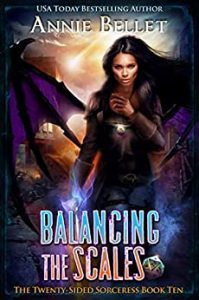 Balancing the Scales by Annie Bellet:
Balancing the Scales by Annie Bellet:
Never fear an ending. For every end is a beginning, too. Even the darkest night is broken by the dawn…
Jade Crow faces her biggest challenges yet, and the consequences just might be world-ending…
This is the tenth book and the exciting conclusion to The Twenty-Sided Sorceress urban fantasy series!
[image error] Battle Bond by Lindsay Buroker:
If you think having one dragon around messes up your life, imagine what it’s like when a second one shows up.
I’m Val Thorvald, assassin of magical bad guys and tenuous ally to the dragon lord Zav.
He still calls me a mongrel and thinks I’m a criminal, but he healed my wounds after we fought those dark elves together. That’s progress, right? Maybe one day, he’ll deign to use my name.
Not that this is my primary concern. I’m busy with a new assignment. Nin, the awesome lady who makes my magical weapons, has a werewolf problem. Specifically, sleazy loser werewolf competitors who want to drive her out of business. Or worse.
Normally, a couple of werewolves wouldn’t be a big deal, but these ones have powerful allies. And then there’s that new dragon.
It turns out he’s one of Zav’s enemies, and he wants to use me against him.
I don’t know why he’s picking on me—it’s not like I mean something to Zav—but somehow I’ve gotten stuck in the middle of dragon politics. If you think that sounds like a nightmare, you’re right.
If I can’t figure out a way to help my friend with the werewolves while keeping these dragons from tearing me apart, we’re both going to end up flatter than the deck chairs when Zav lands on the roof of my apartment building.
 Apple of My Eye by Alyssa Day:
Apple of My Eye by Alyssa Day:
A detective who turns into a tiger. A pawn shop owner who can see how you’ll die. The criminals never had a chance.
If you enjoyed Sookie Stackhouse and True Blood, you’ll love Tess Callahan and the Tiger’s Eye mysteries. Tess and sexy shapeshifter Jack solve mysteries with supernatural flair, and the laughs fly as fast as the clues.” — New York Times and USA Today bestselling author Yasmine Galenorn.
When Tess starts receiving mysterious gifts from a stalker, addressed to “The Apple of My Eye,” she starts to worry. Because it’s Dead End, Florida, where dead bodies have been piling up faster than competitive pecan pies at the county fair. But when the gifts turn deadly, she and Jack know they have to solve the mystery and track down the stalker before they find another dead body … and this time it might be Tess!
Luckily, Tess has Jack to help her solve this case … because sometimes it takes a tiger’s eye to see the truth.
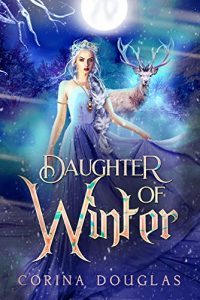 Daughter of Winter by Corina Douglas:
Daughter of Winter by Corina Douglas:
Some choose to fight the darkness; others become it.
Darkness and danger enter Brydie MacKay’s life in the form of an unforeseen inheritance.
Ignorant of her turbulent birthright, and unaware that she is marked by an ancient prophecy wielded by the gods, Brydie becomes prey to a powerful adversary who seeks vengeance for the curse laid upon him thousands of years before.
When her life is threatened, and the lives of the people she cares for are placed in jeopardy, Brydie must choose to embrace her legacy and fight the darkness or lose everything she loves.
Daughter of Winter is the first book in a gripping fantasy series based on the legends behind the winter goddess, Cailleach Bheur. The series draws you into a world of Celtic mythology, powerful Druids, dark magic, and fated mates.
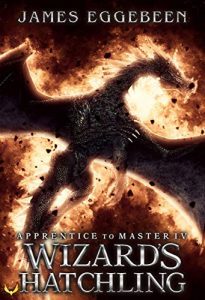 Wizard’s Hatchling by James Eggebeen:
Wizard’s Hatchling by James Eggebeen:
The age of Dragons has returned…
Kedrik was just another promising student at the wizard’s school in Amedon. He thought saving the last dragon egg was the right thing to do. Little did he know he was going to be stuck raising the troublesome hatchling.
Expelled from the school for losing control of their magic and run out of every town they entered, Kedrik and his dragon, Sul’ing must learn to control their wild magic, but the threat to the dragon realm has them chasing their tails.
A missing giant. A sinister conspiracy. A decision that will change the fate of a jarldom.
The bone trade is big business. Black market buyers will offer many silvers for fresh giant bone, to carve into charms or use in dark enchantments.
When cloaked men kidnap the giant Njal Frostborn, everyone knows why. He’s destined to be murdered and sold in that terrible trade.
His best friend, apprentice wizard Idun Wintermoon, is determined to save him from that terrible fate. But to do so, she must defy the head of her order, and face powers far beyond her ability. To survive, she’s going to need an ally. Luckily for her, Lissette Forlatt – a down-on-her-luck sellsword – is on the case. Together, they’ll brave worse than the elements and rogue mages in their quest to save Njal. What they discover might shake the jarldom to its core.
If they live long enough to tell the story.
Sometimes, old debts cost dearly.
War breaks out when the Union’s newest member planet is attacked by an age-old rival. Now every planet or star system with a grudge is capitalizing on the unrest.
And every available hand is drafted into service, to help keep the peace. That includes privateers Kay Ellis and Captain Magdalene Landon, whose honeymoon is cut short when the Black Flag is assigned to the far reaches of Union space.
It’s supposed to be a quiet mission: a simple show of force to deter mischief makers and reassure the border colonies that they haven’t been forgotten.
What they find instead is a ruthless enemy, who will stop at nothing to oust the Union – and anyone flying her colors.
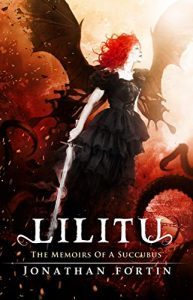 Lilitu: The Memoirs of a Succubus by Jonathan Fortin:
Lilitu: The Memoirs of a Succubus by Jonathan Fortin:
England, 1876. Twenty-year-old Maraina Blackwood has always struggled to adhere to the restrictive standards of Victorian society, denying the courage and desire that burn within her soul. But after a terrifying supernatural encounter, Maraina’s instincts compel her to action.
Maraina soon discovers a plot to unleash a new world—one of demonic aristocrats, bloody rituals, and nightmarish monsters. Putting her upbringing aside, Maraina vows to fight the dark forces assuming control of England. But as her world transforms, Maraina finds that she too must transform…and what she becomes will bring out all that she once buried.
Lilitu: The Memoirs of a Succubus is the first chapter in an epic dark fantasy saga, proudly represented by Crystal Lake Publishing—Tales from the Darkest Depths.
[image error] Wicked Reunion by Lily Harper Hart:
Ivy Morgan was convinced she was heading toward a smooth future … until she was arrested and charged with criminal trespass. Sure, she was saving a woman from certain death at the time, but in order for the criminal case to hold up against a murderer, she has to face the music.
Fear is the one thing Ivy hates more than anything else, so in order to make herself feel better, she decides to fix her Aunt Felicity’s love life. That includes tracking down an old love … who just so happens to have set up shop one town over.
While visiting, Ivy is horrified when a battered woman straggles through the door and is immediately shot dead by a masked man. Traumatized, horrified, she calls her fiancé Detective Jack Harker for help. By the time he arrives, though, things are already spiraling out of control.
Ivy was always a good girl – although sometimes with a bad attitude – but now she’s a murder suspect thanks to some overzealous police officers … and a criminal record that’s fresh in the minds of everyone concerned.
Jack is determined to protect Ivy, but there’s only so much he can do. That means he needs to work with her to solve the crime. Otherwise, it could haunt them for the rest of their lives.
Who would be so brutal, though? That’s the question of the day.
A dangerous game of cat and mouse is afoot, and it’s going to take both Jack and Ivy working together to figure it out.
[image error] Kiss of Death by Kelly Hashway:
The only life Alex Montgomery knows is raising the dead and having zombie servants, normal stuff for an Ophi.
Alex is a necromancer descended from Medusa—or at least he will be once he comes into his powers. So far his life is training to use abilities he doesn’t yet possess, which gets him beaten up by zombies on more than one occasion. And his parents Victoria and Troy won’t tolerate anything less than perfection from Alex. He has a lot to live up to, and they remind him of it every day.
So when an innocent birthday kiss turns deadly, Alex has to work twice as hard to master his Ophi abilities. He isn’t the Chosen One, but he’s still a Montgomery, which means he’s expected to run the Ophi school one day. With a new group of students coming to the school, Alex needs to learn fast because he’s about to be sent on the biggest mission of his life.
[image error] No Crone Unturned by Amanda M. Lee:
Scout Randall is on the verge of getting information about her past. Patience has never been one of her virtues, though. As she’s waiting for her source to get settled, a new problem arises … and it has fangs.
When she was a kid, a chance encounter in a park left Scout questioning the existence of monsters. Now, one of those potential monsters is back … and he’s taken up residence in Hawthorne Hollow. He isn’t alone either.
Vampires are on the prowl and it’s up to the Spell’s Angels to figure out what they want and eradicate them through any means necessary. That’s easier said than done, though.
Scout can’t shake the feeling that something bigger than the obvious is happening, and when her boyfriend’s close friend is infected, she realizes she has to increase her efforts if she wants to save as many people as possible.
One vampire is deadly. A nest, though? That can be catastrophic. In this particular case, the head vampire trying to infiltrate Hawthorne Hollow has a plan … and it involves turning as many people as possible.
It’s a race against time. Scout has to keep those closest to her safe while expanding her search for answers. In the end, she might get more than she bargained for on both fronts … if she can survive long enough to see the light at the end of the tunnel.
 Alpha and Omega by Carol T. Luna:
Alpha and Omega by Carol T. Luna:
Ao never believed in monsters—not after being branded one since childhood. Exiled, he lives with his adoptive guardian, Kaisei Aizawa, amidst verdant valleys surrounded by desolation.
Humanity only had themselves to blame for the wretched landscape. Their war poisoned the seas. Their greed coveted the fertile and the green.
Their ambition set it ablaze.
One hundred years had passed since the war banished Talus to the skies. Doomed to chase the sun, the once proud nation survives as a floating city. But the fallen always hunger for more.
When the Talarians descend to claim the earth as their own, Ao escapes capture—but nothing is without its price. The only man he ever saw as family, Kaisei, is imprisoned instead.
Ao vows to rescue him, no matter the cost—even if it means taking a stand against the most powerful nation left on earth. He knows of the risks. He knows of the dangers. But never would he know that someday, somehow, he would finally believe in monsters.
Stranded in space: no fuel, no way home…and no one coming to help. Nineteen-year-old Kitra Yilmaz dreams of traveling the galaxy like her Ambassador mother. But soaring in her glider is the closest she can get to touching the stars–until she stakes her inheritance on a salvage Navy spaceship.On its shakedown cruise, Kitra’s ship plunges into hyperspace, stranding Kitra and her crew light years away. Tensions rise between Kitra and her shipmates: the handsome programmer, Fareedh; Marta, biologist and Kitra’s ex-girlfriend; Peter, the panicking engineer, and the oddball alien navigator, Pinky.Now, running low on air and food, it’ll take all of them working together to get back home.
 Unbroken Vows by Christine Pope:
Unbroken Vows by Christine Pope:
Hell hath no fury like a demon back from the dead.
Rosemary McGuire thought the past was dead. Unfortunately, she’s dead wrong…because it’s standing on her doorstep, very much alive. But this time, Caleb Lockwood’s target isn’t the hidden hard drive with the footage that proves demons are real. His target is Rosemary.
When Will Gordon comes home to find Rosemary gone, he trusts his instincts and reaches out to a network of friends forged in the fires of too many demon battles. Soon he, Michael, Audrey, and Glynis are casting supernatural nets far and wide in a desperate search. And Will is torn between hurling ungodly curses at who — or what — took the love of his life, and falling to his knees to pray for her safe return.
The truth isn’t just a nightmare — it’s a night terror. And Rosemary faces the terrible choice of surrendering everything she is to an unspeakable evil…or losing everyone she loves.
Unbroken Vows concludes the six-part Project Demon Hunters series.
[image error] Marek by Liza Probz:
Jazmine
Being a thief was never my life’s ambition, but there’s something I need to find, and I’ll go to any length to do it.
It’s a matter of life and death. And no one is willing to help.
A few mishaps later, I find myself in trouble with the feline king and it’s time to RUN.
But I don’t get very far. A handsome humanoid is wanting company for a long trip and he’s offering just the help I need.
For a cost…
Marek
One year. That’s all I get before I’m to step up as rightful king of my people.
A people believed to be extinct by the surrounding worlds.
Even though I’m the eldest and most responsible, I’m in need of an adventure and a beautiful woman to help keep my blood warm.
Finding a human thief who needed a transport around the galaxy was not part of the plan, but once I laid eyes on her, I knew she was mine.
She might plan on ripping me off and not paying up on her half of the bargain, but that’s all right. I don’t only want her body.
I want everything she’s got to offer.
Forever.
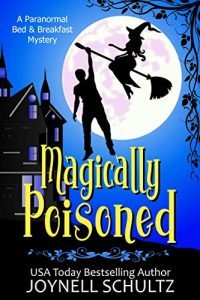 Magically Poisoned by Joynell Schultz:
Magically Poisoned by Joynell Schultz:
The Mayor was murdered?
And a magical plant from my garden is to blame?
Even if I wanted that jerk dead, running my Bed & Breakfast takes all my time. There’s no way I could have snuck a murder into my busy schedule, but obviously, someone I know did.
They stole a plant from my garden and poisoned the Mayor. It couldn’t be my hard-working assistant, the delivery driver, or my gardener, could it be? And I’m sure it wasn’t the sexy water witch who spends an absurd amount of time staying at my little Bed & Breakfast…but he does know way more than he should about magical plants.
When the police ask for my cooperation, I begin to investigate myself. Who would steal from me? Frame me? None of my friends look like they could murder anyone…but what does a murderer look like?
But don’t worry, I have this all under control.
I’m a potion witch and have a few tricks up my sleeve.
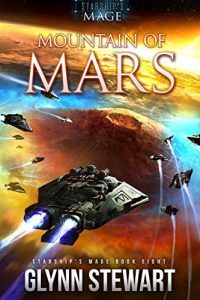 Mountains of Mars by Glynn Stewart:
Mountains of Mars by Glynn Stewart:
The Mage-King of Mars is dead
Chaos rocks Olympus Mons
A new monarch must rise – but she does not stand alone!
As the celebration of the victory at Legatus cools, a shuttle accident claims the lives of the Mage-King of Mars and his heir. The Crown and the Mountain fall to the Mage-King’s daughter, sixteen-year-old Kiera Alexander. She recalls Damien Montgomery, her father’s First Hand, to stand as her Lord Regent.
The pair are unprepared to govern but are thrust into the heart of Protectorate politics as the Mage-King had left behind everything from an unfinished war to an incomplete new Constitution.
Even as they get a handle on the list Kiera’s father left them, Damien is grimly certain of one thing: when it comes to the deaths of Kings, he doesn’t believe in accidents.
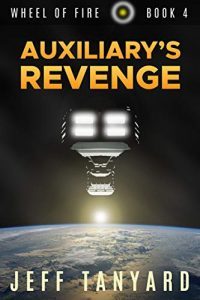 Auxiliary’s Revenge by Jeff Tanyard:
Auxiliary’s Revenge by Jeff Tanyard:
Jerry Harper is back home, recovering from his injuries. It won’t be for long. He’s a strategic asset now, and the government is eager to send him back into action. They want to protect him better on his next war patrol, so he’s assigned to a new station: the Agrarian Commonwealth’s new battleship. He and the fleet soon jump out and begin their mission.
While in space, horrifying news arrives. The Reliants have invented a doomsday weapon, a virus that targets the Agrarian genetic code. They begin deploying it, and Agrarians are killed by the billions. Jerry is tasked with using his electrokinesis to find the virus’s production facility so that a coordinated attack can be made. It might be the only chance the Commonwealth gets before the galaxy’s Agrarians are exterminated.
Jerry’s health is in rapid decline due to his electrokinesis. He can’t afford to push himself. But a Rifleman does his duty, even if it kills him.
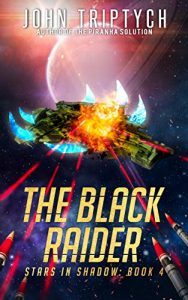 The Black Raider by John Triptych:
The Black Raider by John Triptych:
In command of the most notorious pirate outfit in known space, Captain Dangard is a mystery- a man without a past, until a stowaway triggers an event that reveals long buried secrets.
Before the legend, a young military officer chose honor over duty. His actions led to betrayal and then exile to the worst prison imaginable. Within that forsaken world there were infinite ways to die, yet only one path led to freedom and ultimately, vengeance.
For somewhere in the shadows of deep space, a black ship waited—ready to unleash her unholy power across the entire galaxy.
 Send to Kindle
Send to Kindle
March 29, 2020
Indie Crime Fiction of the Month for March 2020
 Welcome to the latest edition of “Indie Crime Fiction of the Month”.
Welcome to the latest edition of “Indie Crime Fiction of the Month”.
So what is “Indie Crime Fiction of the Month”? It’s a round-up of crime fiction by indie authors newly published this month, though some February books I missed the last time around snuck in as well. The books are arranged in alphabetical order by author. So far, most links only go to Amazon.com, though I may add other retailers for future editions.
Our new releases cover the broad spectrum of crime fiction. We have cozy mysteries, small town mysteries, hardboiled mysteries, historical mysteries, Jazz Age mystries, paranormal mysteries, crime thrillers, psychological thrillers, domestic thrillers, legal thrillers, noir, private investigators, amateur sleuths, police officers, FBI agents, lawyers, missing persons, domestic abuse, crime-busting witches, crime-busting realtors, crime-busting journalists, crime-busting writers, crime-busting weretigers, murdered mayors, murdered Santas, dark family secrets, crime and murder in New York City, Nashville, Florida, Oregon, California, Damascus and much more.
Don’t forget that Indie Crime Fiction of the Month is also crossposted to the Indie Crime Scene, a group blog which features new release spotlights, guest posts, interviews and link round-ups regarding all things crime fiction several times per week.
As always, I know the authors at least vaguely, but I haven’t read all of the books, so Caveat emptor.
And now on to the books without further ado:
[image error] Murder in the Early Hours by Blythe Baker:
When Alice Beckingham finally uncovers the truth about her brother’s death, she must set off for New York City in search of the powerful criminal responsible. An unexpected family reunion pulls her cousin Rose and the famous detective Achilles Prideaux into the case, even if Rose seems mysteriously reluctant to be involved.
Alice’s search for her brother’s killer will lead her from the streets of the city to the highest echelons of New York society as she closes in on the shadowy villain.
With the murder of an informant destroying Alice’s best hopes of cornering her enemy, will she ever find justice for her family? Or will the painful mystery that has tormented her for years go forever unsolved?
[image error] Death in Damascus by Karen Baugh Menuhin:
A 1920s Murder Mystery – Death in the desert with intrigue, adventure and a dog of distinction.’
There’s a damsel in distress and accusations of attempted murder flying around, but it’s not in the comfortable confines of the English countryside, it’s in the very distant city of Damascus.
Lennox must go and investigate, although he’s not too keen on exotic locations, and his old retainer, Greggs is distinctly averse to the very idea.
Nevertheless, ex-Chief Inspector Swift persuades them and they reach the ancient city to discover a movie crew, a spy and a couple of mysterious ladies. Nobody seems to be telling the truth, they all have secrets, and there’s one secret in particular that’s drawn them like bees to the honeypot. But what is it? And then there’s murder, and mysteries from the ancient past, and a handsome Sheik who remains in the shadows. Heathcliff Lennox and Swift must investigate and use all their ingenuity to unravel the enigma that lies hidden deep below the dusty streets of ancient Damascus.
Major Heathcliff Lennox, ex-WW1 war pilot, six feet 3 inches, unruly dark blond hair, age around 30 – named after the hero of Wuthering Heights by his romantically minded mother – much to his great annoyance. Death in Damascus is the fourth book in the Lennox series.
 Killer Deals by Jenna Bennett:
Killer Deals by Jenna Bennett:
Savannah Martin has always been a good girl, doing what was expected and fully expecting life to fall into place in its turn. But when her perfect husband turns out to be a lying, cheating slimeball, Savannah kicks him to the curb and embarks on life on her own terms. With a new apartment, a new career, and a brand new outlook on life, she’s all set to take the world by storm.
If only the world would stop throwing her curveballs…
A CUTTHROAT BUSINESS – #1
Everyone has warned new-minted realtor Savannah Martin that real estate is a cutthroat business. But Savannah doesn’t think she’s supposed to take the warning literally … until an early morning phone call sends her to an empty house on the ‘bad’ side of town, where she finds herself standing over the butchered body of a competitor, face to face with the boy her mother always warned her about.
Rafe Collier is six feet three inches of testosterone and trouble; tall, dark, and dangerous, with a murky past and no future—not the kind of guy a perfect Southern Belle should want to tangle with. In any way. But wherever Savannah turns, there he is, and making no bones about what he wants from her.
Now Savannah must figure out who killed real estate queen Brenda Puckett, make a success of her new career, and avoid getting killed—or kissed—by Rafe, all before the money in her savings account runs out and she has to go back to selling make-up at the mall.
HOT PROPERTY – #2
When Savannah Martin’s fellow Realtor and friend Lila Vaughn is robbed during an open house, Savannah rushes to the rescue with tea and sympathy, or at least a really good lunch and a shoulder to cry on. However, Lila seems more peeved than distraught, and her main gripe is that the sexy robber who tied her to a kitchen chair—for her own good—didn’t follow her suggestion to tie her to the bed instead.
Lila’s description of the man fits Savannah’s old school-mate Rafael Collier to a T. Rafe has recently turned up in Savannah’s life again, and he isn’t above doing a little breaking and entering. Metro Nashville Homicide Detective Tamara Grimaldi is of the same opinion, and when Lila turns up dead, tied to her bed and strangled, Rafe becomes a suspect.
Now Savannah must get busy finding the real murderer before Detective Grimaldi can arrest the wrong man.
 Death Between the Pages by Beth Byers:
Death Between the Pages by Beth Byers:
April 1937
When Georgette Dorothy Aaron first started writing books, she little expected to affect real life. When she dives into writing crime novels with Robert, she little expects to see fiction come to life once again.
Once before she wrote a book and changed the fate of her neighbors. Was it happening again? When the book she and Robert Aaron write together seems to be coming to life, Georgette can’t help but wonder if the gods are playing games with them.
Once again, Georgette and her family turn to the crime in front of them and work together to discover just what happened, why it happened, and what to do next.
 Rudolph the Red-Nosed Country Bumpkin by Sam Cheever:
Rudolph the Red-Nosed Country Bumpkin by Sam Cheever:
Rudolph the Red-Nosed Bumpkin, died a very shiny death…
Rudy-Bob Hortmann has never quite gotten the hang of making friends. He doesn’t much like people, mostly preferring the company of his pot-bellied pig, Ethel Squeaks to humanoid types. But there’s one exception. Rudy-Bob loves kids. So for Christmas every year he gives himself a present. He plays Santa at the annual Deer Hollow Christmas party. Only this year, Rudy-Bob doesn’t make it out of the Santa suit when the Pageant is done. Instead, Deputy Sheriff Arno Willager finds Rudy-Bob literally chillin’ in a snowbank, his bulbous nose flashing red through the snow.
That’s where I come into the picture. I’m Joey Fulle and I’m pretty good at finding bodies around my place on the outskirts of Deer Hollow. I didn’t actually find this one, of course. But I’m fully invested in locating his killer. ’Cause, with the help of my handsome PI boyfriend Hal, my sweet and goofy Pitbull Caphy, and my opinionated Siamese cat, LaLee, I’m also pretty good at finding killers. Sometimes, even before they find me…
[image error] Family Secrets by Stacy Claflin:
Some questions are better left unasked.
Like whose blood is on the knife upstairs.
Kenzi Brannon’s life was turned upside down when she moved into her family’s abandoned home to raise her niece. Problems compound when her aging mother starts to remember things.
And clues the police find regarding the knife don’t match anything Kenzi knows about her family.
Things go from bad to worse when she and her niece discover something horrifying in their house. But not even that compares to the strange ways her mom is acting.
Can they get to the bottom of it all, or will their house—a local legend that goes bump in the night—and the family secrets destroy them all?
[image error] Hush, Hush by Niki Danforth:
She’s living proof that 55 is the new 35, but this case could send the rookie P.I. into permanent retirement.
Private detective Ronnie Lake has a few wins under her belt, but she’s still proving she’s got what it takes, including to her biggest critic…herself. Eager to solve more crimes, the recently-licensed sleuth accepts a job to track down a young runaway. Her search quickly points to a far more sinister crime.
Sniffing out clues with her loyal German Shepherd, the determined investigator uncovers a brutal crime and meddling authorities. The abduction may be part of a dark conspiracy that’s out of her league, and following a trail that leads to shadowy powerbrokers could put her directly in their crosshairs.
Can she solve the case before one missing person turns into two dead bodies?
A smart heroine, fast-paced action, and now a dash of political intrigue, Hush, Hush is the page-turning fourth standalone book in the Ronnie Lake Mystery Series.
[image error] The House in the Woods by Mark Dawson:
Four murders. Two detectives. One mystifying crime.
On Christmas Eve, DCI Mackenzie Jones is called to a shooting at a remote farmhouse. Ralph Mallender believes his father lies dead inside. When three more bodies are discovered, it’s clear a festive family gathering has turned into a gruesome tragedy.
At first it seems like an open and shut case: a murder suicide committed by Ralph’s volatile brother Cameron. Then new evidence makes Mack suspect the man who reported the crime is in fact the perpetrator.
But Mack isn’t the only one with a stake in the case. Private investigator Atticus Priest has been hired to get Ralph acquitted. That means unearthing any weaknesses in Mack’s evidence.
Irascible, impatient and unpredictable, Atticus has weaknesses of his own. Mack knows all about them because they share a past – both professionally and personally. This time round, however, they aren’t on the same side. And as Atticus picks at the loose ends of the case, everything starts to unravel in a way neither of them could ever have predicted…
 Apple of My Eye by Alyssa Day:
Apple of My Eye by Alyssa Day:
A detective who turns into a tiger. A pawn shop owner who can see how you’ll die. The criminals never had a chance.
If you enjoyed Sookie Stackhouse and True Blood, you’ll love Tess Callahan and the Tiger’s Eye mysteries. Tess and sexy shapeshifter Jack solve mysteries with supernatural flair, and the laughs fly as fast as the clues.” — New York Times and USA Today bestselling author Yasmine Galenorn.
When Tess starts receiving mysterious gifts from a stalker, addressed to “The Apple of My Eye,” she starts to worry. Because it’s Dead End, Florida, where dead bodies have been piling up faster than competitive pecan pies at the county fair. But when the gifts turn deadly, she and Jack know they have to solve the mystery and track down the stalker before they find another dead body … and this time it might be Tess!
Luckily, Tess has Jack to help her solve this case … because sometimes it takes a tiger’s eye to see the truth.
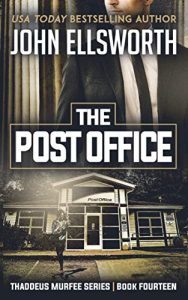 The Post Office by John Ellsworth:
The Post Office by John Ellsworth:
This is the story of Rachel, the world’s bravest girl.
She is very sick and needs a lawyer to get the right medical care. Enter Thaddeus Murfee, who takes up her case and starts doing what lawyers do. Her family and Thaddeus travel from California to Oregon, where the laws are friendlier. There, they set up housekeeping in a campground. Their group includes a young male nurse named Johann.
Johann takes a package to the USPO to mail. Waiting in line, he happens to glance at the FBI Wanted posters. Only to find–he’s wanted, too! The chase is on. Who could that possibly be in the poster if not him? And the name on the poster is his own name. Frantically, he places a call to Thaddeus Murfee.
The trials begin, a race to live, a race to die…
[image error] Wicked Reunion by Lily Harper Hart:
Ivy Morgan was convinced she was heading toward a smooth future … until she was arrested and charged with criminal trespass. Sure, she was saving a woman from certain death at the time, but in order for the criminal case to hold up against a murderer, she has to face the music.
Fear is the one thing Ivy hates more than anything else, so in order to make herself feel better, she decides to fix her Aunt Felicity’s love life. That includes tracking down an old love … who just so happens to have set up shop one town over.
While visiting, Ivy is horrified when a battered woman straggles through the door and is immediately shot dead by a masked man. Traumatized, horrified, she calls her fiancé Detective Jack Harker for help. By the time he arrives, though, things are already spiraling out of control.
Ivy was always a good girl – although sometimes with a bad attitude – but now she’s a murder suspect thanks to some overzealous police officers … and a criminal record that’s fresh in the minds of everyone concerned.
Jack is determined to protect Ivy, but there’s only so much he can do. That means he needs to work with her to solve the crime. Otherwise, it could haunt them for the rest of their lives.
Who would be so brutal, though? That’s the question of the day.
A dangerous game of cat and mouse is afoot, and it’s going to take both Jack and Ivy working together to figure it out.
[image error] New Media & Old Grudges by Amanda M. Lee:
Avery Shaw likes to win. Unfortunately, her single-minded focus on being declared victor tends to get her into trouble. That’s never more true than when she decides to take on her archnemesis Tad Ludington.
With an election coming up, Avery is ready to let her freak flag fly in an attempt to get Tad to show his true colors on television … thus sabotaging his chance at getting into office. That backfires when, after a truly epic meltdown, Tad is shot and left for dead in his own home.
Sheriff Jake Farrell knows Avery isn’t guilty but his belief doesn’t matter when the case is taken away from him and given to the Michigan State Police. The incoming investigator zeroes in on Avery almost instantly … and makes her life a living hell.
In addition to Tad, who is fighting for his life in the hospital, Avery also has to grapple with Eliot’s former employee Fawn, a woman who won’t stop flapping her lips about Avery’s probable guilt … all because she holds a grudge and finally has a platform to express it.
Avery is in a bind. She’s been banned from covering Tad’s attack and the election, and she’s being called a “suspect” on every television station in the state. If she wants to clear her name, she’s going to need help.
There’s little more she loathes than asking for help. She has no choice this time.
Avery has always attracted weirdos. This go-around, those weirdos are going to come to her defense. It’s going to take a motley band of colorful characters to save Macomb County’s favorite intrepid reporter.
Will they be up for the challenge?
[image error] No Crone Unturned by Amanda M. Lee:
Scout Randall is on the verge of getting information about her past. Patience has never been one of her virtues, though. As she’s waiting for her source to get settled, a new problem arises … and it has fangs.
When she was a kid, a chance encounter in a park left Scout questioning the existence of monsters. Now, one of those potential monsters is back … and he’s taken up residence in Hawthorne Hollow. He isn’t alone either.
Vampires are on the prowl and it’s up to the Spell’s Angels to figure out what they want and eradicate them through any means necessary. That’s easier said than done, though.
Scout can’t shake the feeling that something bigger than the obvious is happening, and when her boyfriend’s close friend is infected, she realizes she has to increase her efforts if she wants to save as many people as possible.
One vampire is deadly. A nest, though? That can be catastrophic. In this particular case, the head vampire trying to infiltrate Hawthorne Hollow has a plan … and it involves turning as many people as possible.
It’s a race against time. Scout has to keep those closest to her safe while expanding her search for answers. In the end, she might get more than she bargained for on both fronts … if she can survive long enough to see the light at the end of the tunnel.
 The Girl Next Door by A.J. Rivers:
The Girl Next Door by A.J. Rivers:
Complete silence filled the room until an unexpected sound brought Emma out of her slumber and into the mystery of the girl next door.
Sherwood is a sleepy little town. A town full of friendly faces, and even friendlier neighbors.
Which is why FBI agent Emma Griffin isn’t surprised when her new neighbor starts stopping by to chat.
Turns out her neighbor has a dark past and secrets that made her run.
As much as Emma wished it wasn’t true, dark past and secrets are things that she is far too familiar with, especially now more than ever.
A chilling unknown filled the air of Sherwood, Virginia.
Strange things are happening around Emma.
Things that no one can explain, and many don’t believe.
And when Emma witnesses two figures hidden by sheer curtains, strangling a smaller figure.
A figure she can only assume to be Ruby’s.
She becomes a witness to the murder of the girl next door.
But what do you do when no one believes that the girl even existed?
Emma’s world starts to spin, and she begins to wonder…
Is someone taunting her and taking lives to torment her? Or has she truly gone crazy?
 Magically Poisoned by Joynell Schultz:
Magically Poisoned by Joynell Schultz:
The Mayor was murdered?
And a magical plant from my garden is to blame?
Even if I wanted that jerk dead, running my Bed & Breakfast takes all my time. There’s no way I could have snuck a murder into my busy schedule, but obviously, someone I know did.
They stole a plant from my garden and poisoned the Mayor. It couldn’t be my hard-working assistant, the delivery driver, or my gardener, could it be? And I’m sure it wasn’t the sexy water witch who spends an absurd amount of time staying at my little Bed & Breakfast…but he does know way more than he should about magical plants.
When the police ask for my cooperation, I begin to investigate myself. Who would steal from me? Frame me? None of my friends look like they could murder anyone…but what does a murderer look like?
But don’t worry, I have this all under control.
I’m a potion witch and have a few tricks up my sleeve.
[image error] Murder at High Tide by Lee Strauss:
Murder’s all wet!
It’s 1956 and WPC (Woman Police Constable) Rosa Reed has left her groom at the altar in London. Time spent with her American cousins in Santa Bonita, California is exactly what she needs to get back on her feet, though the last thing she expected was to get entangled in another murder case!
If you love early rock & roll, poodle skirts, clever who-dun-its, a charming cat and an even more charming detective, you’re going to love this new series!
[image error] Haftmann’s Rules by Robb White:
It was another kiddie hunt. Ex-cop Thomas Haftmann is a private investigator in the resort town of Jefferson-on-the-Lake. What do you want me to do?” he asked the man sitting across the desk from him. “I want you to find her and bring her home,” he replied.” Haftmann countered “I have to ask this, you understand. What if she’s dead?” The answer: “Then tell me where she’s buried so I can bring her home.” Thus Haftmann faces another case, another venture into that dark world of murder and madness.
[image error] Deviant Souls by Amanda Wilhelm:
Once I saw her, I had to have her.
Sam McIntyre had it all. Brilliant surgical career. Wealth. The begrudging respect of the best in the profession. Everything except someone to share it with.
Terri Malone is young, beautiful and a bit naïve. So what if Sam is a little possessive, a little pushy? Sam knows more about the world, about life, than Terri does. Of course Sam is going to make most of the decisions.
They look like the kind of couple everybody envies. The big house. The fabulous weekend getaways. The fast track to marriage and a family. As far as anyone knows, everything is perfect. And Sam will do whatever it takes to keep it that way.
 Send to Kindle
Send to Kindle
March 26, 2020
Star Trek Picard heads for the endgame in Part 1 of “Et in Arcadia Ego”
Welcome to my latest episode by episode review of Star Trek Picard, once again a little late. Previous installments may be found here.
Warning: Spoilers behind the cut!
This is the first episode of Star Trek Picard since the series premiere that does not start with a flashback. Instead, we start right in medias res with the La Sirena using the transwarp network to reach Soji’s “homeworld” Coppelius. The name is a reference to E.T.A. Hoffmann’s 1816 gothic tale The Sandman, in which the protagonist’s beloved turns out to be an automaton.
We witness the trip through the transwarp network through the eyes of Agnes Jurati who is hiding under a table in the sick bay, while everything shakes around her. However, due to the combined piloting skills of Rios and Soji, the La Sirena survives the trip to Coppelius relatively unscathed, only to find themselves in trouble once more, because Narek has followed the La Sirena through the transwarp network and promptly starts to fire on them. However, Narek soon gets a taste of his on medicine, when the Borg Cube, piloted by Seven of Nine who showed up to rescue Elnor in the nick of time last episode, also emerges from the transwarp duct, unwilling to miss out on all the fun.
And so the La Sirena, Narek and the Borg Cube are merrily firing on each other, when all of a sudden in a moment of beautiful absurdity that is right out of a New Wave science fiction novel, giant orchids launch from the planet to drag the three ships down to the surface of Coppelius. Coppelius turns out to be among the 30 percent of planets in the known universe which look like the landscape outside Los Angeles. Another 30 percent looks like the forests outside Vancouver, yet another 30 percent looks like a British quarry and the remaining percent look like Tunesia, Iceland or a CGI creation.
The orchids cause a power failure aboard the La Sirena. The ship makes a rough landing, which causes Picard to pass out. With the power off, Rios’ holograms are inaccessible, but luckily Agnes finds an old medical tricorder. She checks out Picard and promptly finds the fatal brain issue that his old medical officer from the Stargazer had diagnosed back in episode 2. “Maybe the tricorder is faulty”, Agnes suggests, but Picard assures her that the tricorder is fine. Then he comes clean to the rest of the crew and also lets them know that he will not be treated like a dying man. Raffi is hit hardest by the announcement, though Soji, Agnes and Rios are affected as well.
I have to admit that I find the whole “Picard is dying” thing annoying. After all, Star Trek Picard has already been renewed for season 2, so we know Jean-Luc Picard won’t die. So they’ll have to find a solution soon (there is a hint in this episode what that solution might be) or they’ll risk becoming like Breaking Bad or The Big C whose protagonists both got a fatal cancer diagnosis in the first episode and then continued to not die for several seasons.
However, Picard’s medical issues can wait, because the La Sirena has crashlanded and has no power. The Borg Cube, which is much bigger, was affected worse and seems to have been smashed. No one even wonders what happened to Narek. Before paying a visit to Soji’s people, Picard and the gang decide to visit the Borg Cube first, just in case they need help. Here, they are reunited with Seven and Elnor who spontaneously hugs Picard. Picard reacts better to the hug than Seven. Elnor really is the sweetest Romulan that ever lived. He’ll hug you or he’ll slice you up with his sword, if he has to. But he’d much rather hug you.
Elnor is clearly upset when he learns about Picard’s condition, because – so he blurts out – he doesn’t want Picard to die. Elnor is also unsure whether to stick with Picard or the Ex-Borg, but Picard tells him to help Seven get the Cube operational again. Which is probably the best course of action, but I still feel that Elnor was massively underused this season.
Having ascertained themselves that everything is okay at the Borg Cube (and still no one wonders whatever happened to Narek), Picard, Soji, Agnes, Raffi and Rios head for the home of Soji’s people, in truth a white villa in the Hollywood hills. Once they get there, “Et in Arcadia Ego” suddenly takes a turn for the retro. And not just Next Generation retro – no, this almost looks and feels like Original Series era retro.
For it turns out that Soji’s homeworld is populated by golden-skinned androids in pairs of two, who are dressed like extras from Logan’s Run. The visuals, make-up, costumes, etc… would have looked dated even in an episode of Star Trek: The Next Generation more than thirty years ago, though they would have fit right into the original series, where the Enterprise did visit a couple of planets of androids. Zack Handlen declares that the androids look as if they’d been murdered by Goldfinger, which further emphasises the 1960s vibe of the whole second half of the episode.
The androids are happy enough to see Soji again, politely curious about Picard, since he was “Data’s Captain”, as a female android puts it before fingering Picard’s wrinkles (no social distancing on Coppelius), friendly enough to Agnes Jurati, since she was Bruce Maddox’s assistant/lover, and largely ignore Rios and Raffi. There are also two familiar faces among the androids. One is Dr. Alton Inigo Soong (note the initials), the never before mentioned son of Dr. Noonian Soong, creator of Data. Dr. Soong the younger is played by Brent Spiner sans Data make-up and wig, which makes him look disconcertingly human and rumpled among all the perfect gold-skinned androids. Of course, this is very likely misdirection, especially since we know that Dr. Soong was in the habit of building himself family members. And so I strongly suspect that Dr. Alton Inigo Soong (again, note the initials) is just as artificial as everybody else on Coppelius. And even if he is not artificial now, he’s building himself a new android body in his lab. Personally, I think Dr. A.I. Soong a new creation, though I’ve also seen speculation that he might be Data’s evil twin (and notice how the androids are all twins) Lore returned to wreak even more havoc. The fact the Hugh the Ex-Borg, who also featured in an episode with Lore, also had a significant role in Picard would support this speculation. I guess we’ll know tomorrow.
The other familiar face is Sutra, sister of Janna (they missed an opportunity by not calling the sister “Kama”), the android Rios’ captain murdered upon the orders of Commodore Oh, and a deadringer for Soji, if Soji had been dipped in golden bodypaint and had raided the wardrobe on the set of Logan’s Run. Sutra is so obviously evil from the moment she first appears that it’s absolutely no surprise when it turns out that she is – gasp – evil and wants to kill all organic life in the universe. And no, after all the debate about the rights of synthetic lifeforms, I had not expected Picard to delve into the oldest cliché in the book and coincidentally also prove the Zhat Vash, who are the villains for fuck’s sake, right.
As for the Zhat Vash, Sutra reveals that the so-called “admonition”, the frightening message the Romulans found on the world with eight suns, was never intended for organic minds at all, but for synthetics. Sutra realises this when she mind-melds with Agnes to see what Commodore Oh showed her. And yes, Sutra taught herself to mind-meld, because she’s fascinated by Vulcan culture. Never mind that this is not how mind-melds work, otherwise Michael Burnham from Discovery would be able to do it, too, since she was raised by Vulcans. I also find it very irritating that everybody can apparently mind-meld now. It does make sense that Commodore Oh would be able to do it, since she is half-Romulan and half-Vulcan and Vulcans and Romulans are biologically the same species anyway. But Sutra is an android who has never even met a real life Vulcan, as far as we know. But she can mind-meld, because she read a few books or watched a few videos or maybe visited the holodeck? Sorry, but this makes no sense at all.
Once Sutra has seen “the admonition” in Agnes’ mind, she announces that it is not a warning at all, but a promise, a promise from an advanced race of synthetics that once organic lifeforms tire of the synthetic lifeforms they have created and try to exterminate them, because that’s what they always do (methinks, the advanced synths have read too much Frankenstein and watched too much Terminator), the beleaguered synthetic lifeforms can call for help and the advanced synthetics will show up and exterminate those pesky organics. So far, so cliched.
The Synths on Coppelius certainly are beleaguered, because a fleet of Romulan warbirds under the command of Narissa (who sadly survived the Borg attack in last week’s episode) is on its way to Coppelius. However, instead of calling in the advanced synthetics to get rid of the Romulans (and presumably the Federation, the Klingon Empire and everybody else), Picard has another idea. The La Sirena is big enough to evacuate all androids (plus Dr. A.I. Soong) from Coppelius. And then Picard will appeal to the Federation for help to deal with the Zhat Vash and help the synths.
Of course, anybody who’s watched the past eight episodes of Star Trek Picard knows that Picard makes a lot of promises, but isn’t very good at keeping them, largely because the Federation and Starfleet have other ideas. Just ask the Romulans. And so Sutra quickly reveals Picard for what he is, an old man who makes perfectly sincere promises he has no chance of keeping, because Starfleet won’t let him.
However, for the rest of the peace-loving androids to call in the intergalactic synth murder squad, Sutra still needs to engage in some additional manipulation. Of course, the fact that a Starfleet captain murdered her sister and another android helps, but an additional nudge is needed. Luckily, the perfect tool falls into her hands, when two androids drag a wounded and dishevelled Narek to the compound. For while everybody else may have forgotten about Narek, the androids sure haven’t. They throw Narek into a cell (one wonders why peace-loving androids who have never had a prisoner before have a prison cell), where the crafty Narek promptly tries to manipulate a naive android called Arcana into giving him water and hopefully letting him go. Arcana is willing to help Narek, but then a seriously pissed off Soji shows up and tells her not to believe a single word Narek says. Narek tells Soji that he loves her, which might even be the truth (I suspect not even Narek himself knows what his feelings for Soji really are), but Soji understandably will have none of that. Then Sutra shows up and asks Narek, how he’d like to get out of his cell. Narek, of course, wants to escape and so Sutra lets him go. Shortly thereafter, Arcana is found dead, stabbed through the eye with her own brooch. You’d really think that Dr. Soong and Bruce Maddox would make more lasting androids. Sutra pins the murder on the missing Narek, though it’s bleedingly obvious that she herself is responsible.
With Arcana dead, the androids are now out for blood and want to call in the advanced synthetics to wipe out the Romulans and the Federation. Picard tries to talk them down, but he has no chance. Dr. A.I. Soong, though supposedly human, agrees. So do Soji and Agnes Jurati, who has decided to stay on Coppelius and continue Bruce Maddox’s research. Cue cliffhanger.
Narek’s declaring his undying love for Soji is not the only declaration of love in this episode. Because a little earlier, Raffi decides to tell Picard that she loves him (So I was right about the romantic vibes between them). However, Raffi knows Jean-Luc Picard too well. “You don’t have to say you love me”, she tells him, whereupon Picard to everybody’s surprise does tell her that he loves her. Somewhere in the galaxy, poor Beverly Crusher is very pissed off that she never got to hear those words. Meanwhile, Chris Rios and Agnes Jurati don’t quite get to the level of a declaration of love, though they do share an emotional good-bye. Rios also tells Agnes that he will never forget her.
The three romantic declarations are satisfying, because by now, we do like those characters, even though I would have liked to see a little more about all of them. And indeed, it is the characters and actors who carry Star Trek Picard. On the other hand, the plot of the finale, which should be the culmination of the series, is disappointing. It’s not just the androids who look like escapees from a 1960s hippie commune either. No, it’s depressing that a writer as good as Michael Chabon couldn’t come up with anything better than a cliched “Androids want to exterminate all humans” plot. I mean, honestly, “robots want to kill humans because of reasons” is such an old chestnut that Isaac Asimov was already tired of it in the early 1940s. It’s not that you can’t tell a good “robots want to kill humans” story, but so far “Et in Arcadia Ego” doesn’t offer anything that we haven’t seen a hundred times before.
Of course, it’s quite possible that the final episode does manage to put a new spin on this very old story. And there certainly a number of hints at what such a spin might be. But part 1 of “Et in Arcadia Ego” was rather disappointing from the moment we got to Coppelius on.
 Send to Kindle
Send to Kindle
March 19, 2020
Star Trek Picard puts together some “Broken Pieces”
Welcome to my latest episode by episode review of Star Trek Picard, again late this time. Previous installments may be found here.
Warning: Spoilers behind the cut!
The requisite flashback at the start of the episode features everybody’s least favourite Romulan Narissa and everybody’s least favourite half Romulan/half Vulcan Commodore Oh (which explains how Oh can mind meld, but is also a Zhat Vash agent). We see them and several other prospective Zhat Vash agents, all women, on a planet with eight suns (this will be important later), where Oh instructs them to touch a glowing rail and receive what the Romulans call the admonition, an apocalyptic vision like the one Oh gave Agnes Jurati during the mind meld we saw last episode.
Most of the propsective Zhat Vash agents go mad after the vision and commit suicide, which can’t be good for their recruitment rates. Narissa survives as does another familiar face, Ramda, the Romulan folklorist we met a few episodes ago. Turns out that Ramda is the aunt of Narissa and Narek and the person who raised them. We also learn that the vision imparted by the initiation ritual drove Ramda mad, but not mad enough to kill herself. The Romulan ship that the Borg assimilated was a Zhat Vash ship and assimilating the despair caused by the apocalyptic visions is what killed the Borg cube.
“We have to stop them,” Narissa says to Commodore Oh, who informs her that they have a plan. On Mars. We all know how that turned out.
In the present day, Picard and Soji beam aboard the La Sirena, where they are greeted by Raffi and Rios. That is, they are greeted by Raffi, because Rios takes one long look at Soji and retreats to his personal cabin (which is full of mermaid statues – a nice touch) to drink himself into a stupour, leaving the ship in the hands of his holograms.
Meanwhile, Raffi and Picard catch each other up on what has happened since Picard beamed down to the Borg cube. Raffi wants to know where Elnor is, whereupon Picard says, “He found a cause even more lost than mine to follow”, this cause being the plight of Hugh and the Ex-Borg.
Raffi tells Picard that Agnes is in a coma, that she is a spy and that she murdered Bruce Maddox. Picard is unwilling to believe that, until Rios’ emergency hologram supports Raffi’s story.
In fact, the bulk of this episode is taken up by people talking to each other aboard the La Sirena, first in groups of two and later all gathered around the same table. That it works as well as it does is testament to Michael Chabon’s skills as a writer.
Picard and Soji talk about Data. Agnes confesses everything, including the murder of Bruce Maddox, to Picard. She also tells him more about the apocalyptic vision she was shown by Commodore Oh. Once again, Agnes doesn’t really tell us what that vision was, only that it was a vision of hell and that it is very old, a warning system left behind by a long gone alien race. According to “the admonition”, something really bad happens when synthetic life reaches a certain level. We don’t know what this really bad thing is and neither does Agnes. It could be the robot revolution, it could be the arrival of Cthulhu. It does, however, involve “the Destroyer”. Why “the Destroyer” decided not to be annoyed at a whole planet full of androids named Stella we don’t know. Maybe “the Destroyer” took one look at Harry Mudd and decided that a planet full of android Stellas was punishment enough for dabbling in things man (and Klingon and Romulan and Vulcan) should not dabble in.
This long gone race created the planet with eight suns, impossible in nature, to attract other spacefaring races to impart their warning. Unfortunately, the first to find the planet with the eight suns were the Romulans with their obsession with secrecy and not the Federation, who would probably have informed all other starfaring races of the warning, or the Klingons, who would have threatened everybody else, or the Vulcans, who would have organised a symposium to discuss the logic of “the admonition”, or the Ferengi, who would have tried to sell it, or the Bajorans, who would have tried to worship it, or the Borg who would have tried to assimilate it. And so the Romulans created the ultra-secret Zhat Vash dedicated to making sure no synthetic life ever arose anywhere else without telling anybody why.
Once he knows the gist of what is going on, Picard calls Admiral Clancy, the annoying woman who wouldn’t give him a ship way back in the second episode and tells her everything. Picard is still babbling that Clancy must listen to him. “Oh, shut the fuck up”, Clancy cut him off and tells the La Sirena to proceed to Deep Space 12, where a squadron will be waiting for them.
Meanwhile, Raffi tries to figure out what the hell is wrong with Rios by interrogating his holograms, all five of them. It’s a fun scene, where Santiago Cabrera gets the chance to play five completely different characters with different accents (two English RP, one Irish, one Scottish, one Spanish) plus Rios Prime as well. The holograms all know a little bit about what is going on, though not the big pciture, because they’re all piece of Rios. One of them recognises Soji as someone called Janna from Rios’ past, another knows that Rios’ old captain from his Starfleet days killed himself, which is why Rios is so traumatised.
Raffi finally gets the whole story from Rios. Back when Rios was first officer aboard a Starfleet ship, they encountered two envoys from a previously unknown planet. Someone named Beautiful Flower and a woman named Janna who looked just like Soji. Rios quite obviously liked Janna a lot. When Rios, Captain van der Meer (spelling the name the Dutch way here), Janna and Beautiful Flower had dinner, van der Meer suddenly pulled his phaser and killed both envoys. Then he confessed to Rios that Commodore Oh made him do it and threatened to destroy the whole ship, if van der Meer did not obey. The guilt-ridden van der Meer killed himself and Rios covered everything up, because he had no idea whether Oh really would destroy the ship. Starfleet showed its gratitude by kicking Rios out and that’s why he is so traumatised.
Agnes feels guilty about murdering Bruce Maddox and promises she’ll turn herself in, once they reach Deep Space 12. Agnes is also highly fascinated by Soji and asks all sorts of questions, “Do you eat? Do you drink? Do you sleep?”
“Are you going to kill me, too?” Soji asks Agnes, “Because I won’t let you.” Agnes assures Soji that she is through with killing people.
Picard then gathers everybody around the table, where everybody shares what they have learned. Rios also brings Soji Janna’s favourite food. All those revelations trigger more previously unknown memories in Soji who decides that they don’t have the time to go to Deep Space 12 first and should instead head directly to her homeworld, because the Romulans know where it is. She also tries to hijack the La Sirena and use the Borg’s Transwarp network to beat the Romulans there. Picard manages to talk her down, while Rios snaps that they need implement safety measures, otherwise the ship will be destroyed. From the sparks flying between Rios and Soji, it’s obvious that there was something between Rios and the late Janna. There’s also an amusing scene where Picard once more tries to take the captain’s chair aboard the La Sirena, only to realise that he has no idea how the interface works.
The episode ends with the La Sirena entering the transwarp tunnel. Narek tags along as well in his one man flyer.
Meanwhile aboard the Borg Cube, Elnor is in dire straits. He may be a great fighter, but the Zhat Vash are pretty good as well, there are more of them and they have stun grenades. And so Elnor is about the be captured or killed, when Seven of Nine storms in, blasting away the Zhat Vash. A relieved Elnor spontaneously hugs her and Seven has absolutely no idea how to respond. As I said in my review of the last episode, Elnor, who was raised by tough warrior women after all, apparently seems to have adopted Seven as his surrogate Mom.
Seven and Elnor make it to the Borg Queen’s chamber, Elnor asking questions all the way. They blockade themselves, but the Zhat Vash are hot in pursuit. Seven proceeds to hack the Borg Cube, but that doesn’t help either. Elnor asks whether the Borgs who are still in stasis could help, but Seven says they would be useless without a collective. Then she has the idea to create a collective only for this one Cube. Elnor wants to know what she’s waiting for, but Seven is reluctant for obvious reasons, after all, she used to be a Borg and knows how traumatic both being assimilated and being separated from the collective can be. She’s also worried that she herself might be unwilling to give up control, once she has it. But the situation is desperate, so Seven does plug herself into the Cube and awakens the Borg in stasis, after all.
However, Narissa still has some tricks up her sleeve and opens the airlocks to vent the Borg into space. The fact that this moment is upsetting shows how much Star Trek Picard has done to humanise the Borg. In the end, the surviving Ex-Borg attack Narissa and pile on her in a scene that is more reminiscent of The Walking Dead than Star Trek. Though it looks as if Narissa was beamed away in the end after all.
This is an odd episode. Comparatively little happens in term of action and most scenes feature just people talking to each other in different combinations. Nonetheless, “Broken Pieces” isn’t boring, because there are a lot of revelations and questions answered. Some critics have complained that the fact that Rios is also connected to the conspiracy and not traumatised by some completely different event is a coincidence too far. And who knows, maybe it is. Though it never occurred to me that there was too much coincidence, while watching the episode. As for why the pilot Raffi recommended to Picard turns out to be deeply involved in the conspiracy as well, Raffi is a conpiracy theorist, remember? That might be the very reason why she knows Rios in the first place.
But most of all, “Broken Pieces” shows how good the cast and the writers are, because in the hands of anybody else, this might well have been a truly dreadful episode.
The next two episodes are the finale. I’ll try to review those on time.
 Send to Kindle
Send to Kindle
March 17, 2020
The Cold Crowdfunding Campaign
Organised by Captain C. Barton
Started on August 4, 2178, 08:48 Category: Accidents and emergencies
My name is Barton and I’m the pilot of an EDS (Emergency Dispatch Ship) currently en route to the frontier world of Woden to deliver some desperately needed medical supplies.
I have a problem, because I just discovered a stowaway aboard my ship, an eighteen-year-old girl named Marilyn Lee Cross. Upon questioning, Marilyn explained that her brother Gerry works on Woden as part of the government survey crew. She wants to visit him and since there is no regular passenger traffic to Woden because of the current medical crisis, she snuck aboard my ship. She did see the big red UNAUTHORIZED PERSONNEL KEEP OUT! sign, but chose to ignore it.
Now anybody who is familiar with the Emergency Dispatch Service will be familiar with Paragraph L, Section 8, of Interstellar Regulations:
“Any stowaway discovered in an EDS shall be jettisoned immediately following discovery.”
So you see my dilemma: The law requires that I throw Marilyn out of the airlock. However, I don’t want to do that. Sure, Marilyn may be a little stupid, but that’s hardly a reason to kill her. Not to mention that our security measures are way too lax, as I’ve pointed out time and again. And, besides I’m just not the killing type. If I were, I’d have joined the Starship Troopers, where the pay is better.
Once I discovered Marilyn, I immediately commed my superior Commander Delhart, who yelled a lot and then demanded that I throw the girl out of the airlock at once.
I asked about emergency refuelling – which is possible, if rare and expensive. Delhart said if I requested an emergency refuel without an emergency (as if this wasn’t an emergency), I’d have to pay for it out of pocket. Oh yes, and I should consider myself fired, if I refuse to follow orders.
So in short, I need twenty thousand solar credits and I need them in the next ten hours or poor Marilyn is doomed.
So save Marilyn! And save me from becoming a murderer!
Donate
Share
Updates:
August 4, 2178, 08:54 by Tom G.:
Don’t do it, Barton! A few years ago, they forced me to do it and I never managed to forget or live it down.
PS: Donated what’s left of my unemployment pay. Because they will fire you anyway.
August 4, 2178, 09:02 by Brett:
Thank you for serving. Donated.
August 4, 2178, 09:15 by JWC:
The cold equations of physics and the laws of space know no mercy. Out of the airlock with her now!
August 4, 2178, 09:18 by Ursula in reply to JWC:
You, sir, are an unempathetic arsehole!
PS: Donated.
August 4, 2178, 09:20 by JWC in reply to Ursula:
Overly emotional and knows nothing of science. How typical of a woman!
August 4, 2178, 09:23 by Ursula in reply to JWC:
Oh, so you’re a misogynist, too. Why am I not surprised?
August 4, 2178, 09:22 by Michael M. in reply to JWC:
Way too soft, Ursula. He’s a fascist arsewipe.
Donated as well.
August 4, 2178, 14:19 by Jeannette in reply to JWC:
Ursula and Mike are right. You’re a fascist, a misogynist and probably an arsewipe, too. Also why do you even bother to comment, if you’re not going to help?
Donated and shared.
August 4, 2178, 09:35 by Gary W.:
I have a question: What idiot designed a spaceship (and an EDS at that) that has zero margin for error? It’s not just a mass increase due to a stowaway that will cause problems. Fuel loss, meteor strikes, system failures, pilot errors could all easily cause an EDS to fail.
Donated, because bad engineering shouldn’t cause deaths.
August 4, 2178, 09:44 by Captain Barton (Organiser) in reply to Gary W:
Tell me about it, Gary. I’ve been complaining about the inadequacy of our ships and security measures for ages now. Maybe now they’ll listen.
August 4, 2178, 09:46 by Tom G. in reply to Gary W.:
Can confirm. EDS ships are crappily engineered and our security measures are a joke. How many more must die before somebody does something?
August 4, 2178, 09:55 by Cory D. in reply to Gary W.:
I agree. The engineering is just plain bad. Also, why just a simple “Keep out” sign with no notice that the penalty for ignoring the sign is death?
Donated as well.
August 4, 2178, 11:09 by Richard H. in reply to Gary W.:
In my opinion, the Emergency Dispatch Service is looking at a lawsuit for criminal negligence here. Captain Barton will probably be on the hook for manslaughter as well (sorry). I advise the family of Marilyn to get a lawyer asap.
Donated and started a legal fund for the Cross family.
August 4, 2178, 11:12 by Captain C. Barton (Organiser) in reply to Richard H:
Dude, I’m just following orders here. I no more like this than you.
August 4, 2178, 11:23 by Richard H. in reply to Captain C. Barton (Organiser):
The “I was just following orders” defence didn’t save Korvakian, the butcher of Telos V, and it won’t save you.
August 4, 2178, 11:25 by Captain C. Barton (Organiser) in reply to Richard H:
Great. Now you’re comparing me to one of the worst war criminals in galactic history. Thanks a lot.
Why do you think I started this GoFundMe? Because I don’t want to do this.
August 4, 2178, 12:45 by JWC in reply to Richard H.:
The laws of physics and the cold equations of space know no mercy.
August 4, 2178, 12:49 by Richard H. in reply to JWC:
Shut up, troll! We’re talking about the laws of man here.
August 4, 2178, 14:56m by Neva of Gelania:
By the Stars of Zod, I fear this may all be my fault. I met Marilyn, whose Gelanese is excellent by the way, aboard the Stardust, where I work as a cleaner. She told me all about her brother and I told her that there would be an EDS leaving for Woden that very day.
I’m so sorry, Marilyn. I honestly didn’t know that they kill stowaways. I thought the penalty was just a fine.
Oh please, Captain Barton, don’t kill Marilyn for something I did. I donated my entire pay and the rest of the Stardust cleaning crew chipped in as well. It’s not much, but I hope it will help.
August 4, 15:15 by SadPuppy3:
Girls don’t belong in space. Out of the airlock with her.
August 4, 15:23 by Jeannette in reply to SadPuppy3:
Shut up, misogynist troll!
August 4, 15:45 by Gerry Cross:
Hi, here’s Gerry, the brother of Marilyn. Me and the boys of the survey crew all donated, of course.
Mari, sweetheart, don’t do something stupid like that ever again, do you hear me? The frontier worlds are not like Earth. It’s the Wild West out here. Also, why aren’t you on Mimir like you promised?
Barton, if you throw my sister out of that airlock, me and the boys of the survey crew will rough you up, understood? And they’ll never find your body.
August 4, 15:52 by Captain C. Barton (Organiser) in reply to Gerry Cross:
Chill out, dude. I don’t want to kill you sister either.
August 4, 15:54 by Marilyn Lee Cross in reply to Gerry Cross:
I’m so sorry, Gerry. I didn’t know. Please help me. I’m so scared. And don’t hurt Captain Barton. It’s not his fault and he’s been very kind.
August 4, 16:01 by Gerry Cross in reply to Marilyn Lee Cross:
It’s all right, Mari. Everything will be all right.
August 4, 16:16 by Harold W. Tannenbaum, director of the Woden colonisation project:
Far be it from me to interrupt this drama, but when can we expect those medical supplies? Cause we’ve run out of kala fever serum here and several members of Group One are sick.
August 4, 16:22 by Gerry Cross in reply to Harold W. Tannebaum:
With all due respect, sir, that’s my sister we’re talking about here. Group One can endure a bit of cosmic diarrhoea.
August 4, 16:25 by Robert Tucker in reply to Gerry Cross:
Hi Gerry, it’s Bob from Group One. I think we met at the rec centre once. Anyway, we can manage for a few more hours without the serum, even if purple and green spotted poop is really, really unpleasant.
PS: The whole ward donated.
August 4, 18:57 by Commander Eberhard Delhart:
Stop stalling, Barton, and jettison the girl now. That’s an order!
August 4, 19:09 by Captain C. Barton (Organiser) in reply to Commander Eberhard Delhart:
With all due respect, sir, fuck you! We’re funded. And I quit.
***
Inspired by this comment thread at Camestros Felapton’s blog and “The Cold Equations” by Tom Godwin:
 Send to Kindle
Send to Kindle
March 16, 2020
Luck and Magic 2020 – A Round-Up of Indie St. Patrick’s Day Speculative Fiction
 Our monthly round-ups of new speculative fiction and new crime fiction releases by indie authors are a perennially popular feature. Therefore, we now offer you a round-up of our favourite St. Patrick’s Day speculative fiction by indie and small press authors.
Our monthly round-ups of new speculative fiction and new crime fiction releases by indie authors are a perennially popular feature. Therefore, we now offer you a round-up of our favourite St. Patrick’s Day speculative fiction by indie and small press authors.
These St. Patrick’s Day stories cover the broad spectrum of speculative fiction. We have urban fantasy, paranormal romance, paranormal mystery, children’s fantasy, portal fantasy, witches, werewolves, fairies, leprechauns, lion shifters, reindeer shifters, undead demon hunters, superheroes, magic coins, mail order brides, Lady Luck and much more. But one thing unites all of those very different books. They’re all set on or around St. Patrick’s Day.
As always with my round-up posts, this round-up of the best indie holiday speculative fiction is also crossposted to the Speculative Fiction Showcase, a group blog which features new release spotlights, guest posts, interviews and link round-ups regarding all things speculative fiction several times per week.
As always, I know the authors at least vaguely, but I haven’t read all of the books, so Caveat emptor.
And now on to the books without further ado:
 Feeling Lucky by Kathy Bryson:
Feeling Lucky by Kathy Bryson:
“Most most people who spend time at a job develop ideas of how they can improve a product or business. They just don’t always get a chance to share. And that’s not counting the thousands of unpublished artists, writers, and musicians out there…”
What would you do if you suddenly got 5 million dollars to spend on your dreams? What it if was a leprechaun’s money?
Megan O’Malley was mortified when she got drunk and pinched the bandleader’s ass at a cousin’s wedding. But she was astonished when he turned out to be a leprechaun! Seems they’re not the little, green men of fairytales after all. They just say that because they like a good joke and what better way to hide the gold? Oh, that bit’s true – as is the part about not sharing!
An award-winning fantasy of money and magic and making the most of your dreams!
 Into the Rainbow by Jessica L. Elliott:
Into the Rainbow by Jessica L. Elliott:
Twins Dierdre and Treasa have gone to Kansas City on their first spring break without parents along with their tagalong sister Darcie. Other than constant rain, everything is going smoothly until a birthday prank gone wrong sends them into the Emerald Glade where leprechauns reign and magic is real. In order to get home, the girls must find out why they were summoned so they can return through the rainbow.
 Away with the Fairies by S.K. Gregory:
Away with the Fairies by S.K. Gregory:
Seven years ago, Declan disappeared while out in the woods. A year later, he returned home, with no memory of where he was or what happened to him.
Now Declan works as a barista, trying to get on with his life and forget what happened, but that isn’t easy when he keeps seeing things that aren’t there. Shadows from the corner of his eye, strange lights around people. It gets worse when a new girl starts working at the coffee shop. There is something about her, something different.
With her help, Declan starts to uncover the truth of what happened to him, how the Fae took notice and pulled them into their realm. Now they want him back.
A Luck O’ The Irish Tale. Can be read as a standalone.
 End of the Rainbow by Michelle Ann Hollstein:
End of the Rainbow by Michelle Ann Hollstein:
It’s St. Patrick’s Day and Aggie, Betty and Roger are celebrating at an Irish pub in Palm Springs when Betty’s leprechaun-love-interest drops dead. Could it be murder? Join Aggie and friends as they embark on a celebration they won’t soon forget.
 The Man from U.N.D.E.A.D.’s St. Patrick’s Day Parade by Darren Humphries:
The Man from U.N.D.E.A.D.’s St. Patrick’s Day Parade by Darren Humphries:
The United Nations Department for the Enforcement and Apprehension of Demons is the first, last and only line of defence against the supernatural threats trying to break into a world where magic and technology are uneasy bedfellows.
A death brings Agent Ward, the Man From U.N.D.E.A.D., to Ireland and to a secret location where there are dangers without and secrets within.
Can Ward work out the latter before a veritable parade of demonic beings launch a full-scale attack?
The Man From U.N.D.E.A.D.’s St Patrick’s Day Parade is a short story featuring Agent Ward from the Man From U.N.D.E.A.D. series of novels.
Lion shifter Aaron wants to settle down and find his mate. After one of his friends finds his mate online, Aaron decides to give LK Brides a try. He’s surprised to get matched the very day he signs up.
Curvy beauty Emma has been waiting to get matched by LK Brides for months. When it finally happens, she can’t believe the how strong her feelings are for her match after only one meeting.
As their relationships moves forward quickly, Emma begins to doubt how much she can trust Aaron. Will the lion shifter luck out and find love this St. Patrick’s Day? Find out in the second Holiday Mail-Order Mates story.
 Four-Leaf Clover by Amanda M. Lee:
Four-Leaf Clover by Amanda M. Lee:
Clove Winchester is feeling lucky at life, and that’s before a mysterious stranger drops into her magic store and gifts her with a special coin. Suddenly things can’t go wrong for Clove, and she’s the center of attention in the Winchesters’ world – especially because Aunt Tillie wants that coin.
When a near-death experience rocks Clove and her boyfriend Sam, Clove takes a closer look at the coin and realizes there’s a lot she can do with her new luck streak. Unfortunately for Aunt Tillie, Clove is determined to keep the benefits to herself.
When a brazen armed robber hits Hemlock Cove and goes after Bay, all of the Winchester witches band together to solve the crime and save the day. Of course, they may need a little luck to do it.
 The Reindeer’s St. Patrick’s Surprise by Elizabeth Ann Price:
The Reindeer’s St. Patrick’s Surprise by Elizabeth Ann Price:
Harlan Connors is a reindeer shifter who isn’t ready to settle down. After a disastrous attempted mating, all he wants is to have fun. Mating and marriage are the furthest things from his mind.
Temp is a woman who knows what she wants – a baby. Convinced that Mr. Right is never going to show up, she decides to start a family on her own.
However, a chance meeting and a wild St. Patrick’s Day later, the two of them find themselves married and both unable and unwilling to stay away from one another. But can they weather their own insecurities and Harlan’s ex-fiancée to find their happy ever after?
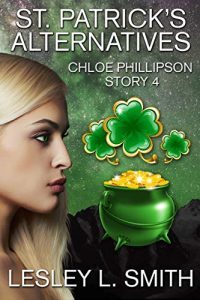 St. Patrick’s Alternatives by Lesley L. Smith:
St. Patrick’s Alternatives by Lesley L. Smith:
Physicist Chloe Phillipson uses her anti-gravity power to help save St. Patrick’s Day.
 To Catch a Leprechaun by Emily Martha Sorensen:
To Catch a Leprechaun by Emily Martha Sorensen:
It’s really tough to catch a leprechaun. Especially when sisters get in the way.
The Greek Goddess of Luck can be found hiding in the most unlikely of places. In an effort to hide from her father, Luck, or so she likes to be called, spends her time tending bar at Lady luck, her own establishment in mid-town Manhattan.St. Patrick’s Day is the busiest day of the year – the annual drinking contest brings hundreds of people to fight the reigning champion, Sosha, for the title.On her way to work, Luck meets two cops at a police checkpoint. She quickly finds herself wondering what it would be like to not be so alone anymore.After their shift, Sullivan, Santina, and Mackenzie hear the call of Lady Luck, and find the sexy temptress behind the bar.Unable to resist her, the pack soon discovers their need to claim her as their own. Now tied to a pack of wolf shifters, the Goddess of Luck has no idea what plans they have unwittingly put into motion.
 Send to Kindle
Send to Kindle
March 15, 2020
Luck and Crime 2020 – A Round-Up of Indie St. Patrick’s Day Crime Fiction

Our monthly round-ups of new speculative fiction and new crime fiction releases by indie authors are a perennially popular feature. Therefore, we now offer you a round-up of our favourite St. Patrick’s Day mysteries by indie and small press authors.
These holiday mysteries cover the broad spectrum of crime fiction. We have plenty of cozy mysteries, culinary mysteries, animal mysteries, historical mysteries, paranormal mysteries, police procedurals, crime thrillers, noir thrillers, legal thrillers, romantic suspense, amateur sleuths, crime-fighting witches, crime-fighting bakers, crime-fighting ghostwriters, crime-fighting dogs, murders, pranks, missing gold coins, murdered leprechauns, Sherlock Holmes and Doctor Watson and much more. But one thing unites all of those very different books. They’re all set on or around St. Patrick’s Day.
As always with my round-up posts, this round-up of the best indie holiday mysteries is also crossposted to the Indie Crime Scene, a group blog which features new release spotlights, guest posts, interviews and link round-ups regarding all things crime fiction several times per week.
As always, I know the authors at least vaguely, but I haven’t read all of the books, so Caveat emptor.
And now on to the books without further ado:
 Struck by Shillelagh by Amy Alessio:
Struck by Shillelagh by Amy Alessio:
Struck by Shillelagh: A St. Patrick’s Day novella mystery! When her friend is arrested for attempted murder of the Mayor at the St. Patrick’s Day parade, Alana O’Neill tries to learn who really hit the unpopular politician with the black thorn shillelagh. A new booth owner with a questionable past, a secret author featuring the antiques mall and recipe failures are unable to distract Alana for long on her quest for justice. Vintage recipes include Edible Blarneystones, Refrigerator Cake, Lime Ribbon Delight and more. This story is 11,000 words.
Includes Bonus Story Thankful for Pie: In this Thanksgiving holiday novella, Star tries to learn who is sabotaging her family’s struggling bakery. She also wonders why her new karate instructor drives her so crazy.
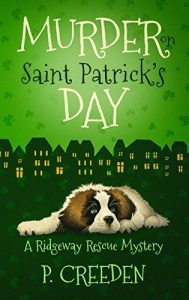 Murder on Saint Patrick’s Day by P. Creeden:
Murder on Saint Patrick’s Day by P. Creeden:
It’s St. Patrick’s Day and 20-year-old Emma Wright is working hard at training five-month-old Molly, her foster puppy, to become a therapy dog. But her training coach and neighbor gets an emergency call, cutting the lesson short, and Emma volunteers to pick up her daughter at a St. Patrick’s Day concert in town.
When Emma arrives, the concert has just finished up, and the teenage girls are visiting with the band. Then the lead singer stumbles and falls to the ground, dead. Emma becomes the only level head in the crowd and calls for help. When the Sheriff and Colby arrive, they investigate it as a potential accident. But Emma finds subtle clues that something more sinister is going on. Did the leader of the band die in an accident, or was it murder?
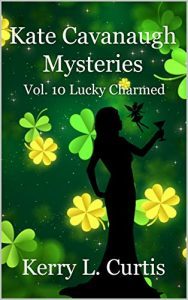 Lucky Charmed by Kerry L. Curtis:
Lucky Charmed by Kerry L. Curtis:
Kate is trying to find out who is trying to kill Rhys, while she’s looking for the stolen Cartier necklace and searching for an Irishman’s pot of gold. She gets help from Cap much to Rhys dismay.
 Shamrock Shenangigans by Kathi Daley:
Shamrock Shenangigans by Kathi Daley:
Zak and Zoe travel to Ireland for their first Valentines Day as husband and wife. They have been invited to attend a murder mystery weekend in a real haunted castle. During their first night at the castle, they find one of the guests dead. Really dead. As they delve into the murder they begin to see that not only are things not as they appear, but several of the other attendees are not who they claim to be. During the course of her investigation Zoe discovers a secret about herself that is more than just a little shocking.
 Shamrock Snakes by Tom Dots Doherty:
Shamrock Snakes by Tom Dots Doherty:
Set in Dublin during a St. Patrick’s Day Festival, Shamrock Snake is an exciting Irish crime thriller that’s told from a male and female perspective as Doyle tires to find out what is behind a series of gruesome murder-suicides.
 Shammed by Bernadette Franklin:
Shammed by Bernadette Franklin:
At R.K. Legal & Associates, office hours are between ten to six, pranks happen after hours, and evidence of all shenanigans are removed before doors open to clients.
When Alice’s boss, Mr. Kenton, starts a prank war with Lance McCarthy, an up-and-coming attorney from a rival firm, she thinks it’s just business as usual.
She’s never been so wrong in her life.
Chosen to be Mr. Kenton’s accomplice, Alice must face off against Lance in what quickly becomes a winner-takes-all game of hearts.
 Paddy Whacked by S. Furlong-Bollinger:
Paddy Whacked by S. Furlong-Bollinger:
Inspector Helmes and his trusty sidekick, Watkins, know they have their work cut out for them in solving the murder of Paddy O’Toole, the Grand Leprechaun. However, nothing can prepare them for the strange lineup of suspects they encounter at the annual Holiday Icon Convention.
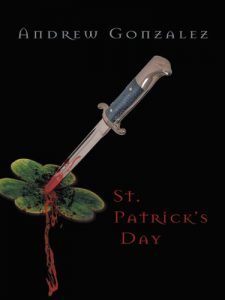 St. Patrick’s Day by Andrew Gonzalez:
St. Patrick’s Day by Andrew Gonzalez:
St. Patricks Day is a story about two brothers who had a terrible history in the past and takes place in Celina, Ohio. The older brother Jimmy Marsh tries to kill his younger brother Jacob Marsh out of anger and jealousy when they were kids. At the age of ten the older brother Jimmy Marsh did his part in killing his parents. Because of doing so, Jimmy was abused by his parents and Jacob the younger brother was treated like a prince. Jimmy failed to kill his brother Jacob and was sent to a sanitarium for ten years but then he escaped and went after Jacob again. Through the years Jacob had delusions of seeing his brother, and now that Jimmy is free, he has another chance of going after Jacob and his friends. So now its up to Jacob not only to save himself but also the people he loves.
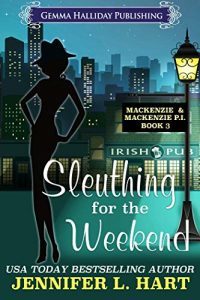 Sleuthing for the Weekend by Jennifer L. Hart:
Sleuthing for the Weekend by Jennifer L. Hart:
It’s St. Patrick’s Day in Beantown, and Mackenzie Elizabeth Taylor needs the Luck of the Irish to solve her latest mystery—namely, who was the mysterious Uncle Al, the man who left her his apartment building as well as his PI business? But that personal investigation has to take a backseat to raising her teenage genius Mac, and dealing with her immature baby-daddy and demanding mother. Not to mention taking on a job that will actually produce some green.
The case is a gnarly dispute by two Irish pub owners who happen to be brothers as well as rivals over a missing inheritance. With the entire city out pub-crawling, Mackenzie goes hunting for a pot of gold…but winds up with a body instead.
With an assist from Mac, Mackenzie must slip into her gumshoes and go toe-to-toe with Detective Hunter Black, her neighbor, protector, and main squeeze, in order to solve her case. this case and claim the reward before someone else. Can the mother daughter team successfully investigate in the middle of a city-wide chaos? Or is their luck about to run out?
 End of the Rainbow by Michelle Ann Hollstein:
End of the Rainbow by Michelle Ann Hollstein:
It’s St. Patrick’s Day and Aggie, Betty and Roger are celebrating at an Irish pub in Palm Springs when Betty’s leprechaun-love-interest drops dead. Could it be murder? Join Aggie and friends as they embark on a celebration they won’t soon forget.
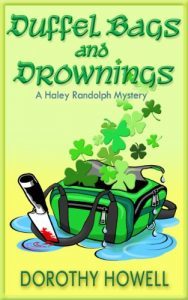 Duffel Bags and Drownings by Dorothy Howell:
Duffel Bags and Drownings by Dorothy Howell:
Fashionista and event planner to the stars Haley Randolph is staging a St. Patrick’s Day bash for one of Hollywood’s biggest couples. When she visits the catering company to check on preparations, it looks like the green ice sculptures will be the hit of the party — until Haley finds a server floating face down in the water tank.
Haley becomes the prime suspect in the murder. With a killer — and a giant leprechaun — on the loose, she must do some fast sleuthing to find the pot of gold at the end of this rainbow. Will she kiss the Blarney Stone — or the hot new detective on the case?
Haley will need the luck of the Irish to find the killer — and the hottest handbag of the season!
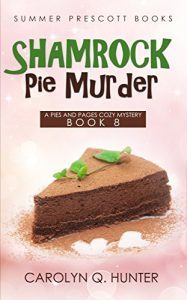 Shamrock Pie Murder by Carolyn Q. Hunter:
Shamrock Pie Murder by Carolyn Q. Hunter:
Indulge yourself in a sweet slice of murder!
It’s Saint Patrick’s Day in Culver’s Hood and pie shop owner, Bertha Hannah, has been asked to cater the dessert course at a local chiropractic luncheon. Unfortunately, what seems like a fun event is hampered by persistent protestors, professional disagreements, and jealous lovers. The unpleasant situation goes from bad to worse when one of the event’s attendees is murdered, under most unusual circumstances.
Bert has her hands full trying to prove one man’s innocence while hunting down ghosts of the past. Will she be able to “crack” the case, or will she find herself permanently on pins and needles?
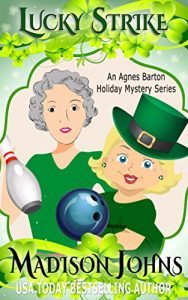 Lucky Strike by Madison Johns:
Lucky Strike by Madison Johns:
When Sheriff Peterson is injured during a high-speed chase — Agnes and Eleanor spring into action.
Agnes Barton and Sheriff Peterson’s working relationship is shoddy at best. He’d rather balk at the idea of Agnes and Eleanor independently investigating his cases. That changes though when he’s injured in a high-speed chase. While the good sheriff is laid up at a secret location for his own safety, the girls are on the case.
It’s hard to investigate the true nature of the sheriff’s accident though when Rodney Scott is murdered at the local bowling alley and all they have to rely on is the Interim Sheriff Karl Roberts. Agnes needs to quell her suspicions about Roberts as the girls launch an investigation that has them at their wits end and it will take more than luck to solve this case.
 St. Patrick’s Day Secret by Linda P. Kozar:
St. Patrick’s Day Secret by Linda P. Kozar:
When seventeen-year-old Sean visits his eccentric Irish grandfather, he discovers a secret that his Gramps is obsessed with—finding the family’s cache of gold coins, stolen, according to his grandfather, by leprechauns. Though Sean doesn’t believe in elves or leprechaun’s he decides to spend his last summer before college with his grandfather, and joins him in his quest to find a purloined pot of gold.
 Four-Leaf Clover by Amanda M. Lee:
Four-Leaf Clover by Amanda M. Lee:
Clove Winchester is feeling lucky at life, and that’s before a mysterious stranger drops into her magic store and gifts her with a special coin. Suddenly things can’t go wrong for Clove, and she’s the center of attention in the Winchesters’ world – especially because Aunt Tillie wants that coin.
When a near-death experience rocks Clove and her boyfriend Sam, Clove takes a closer look at the coin and realizes there’s a lot she can do with her new luck streak. Unfortunately for Aunt Tillie, Clove is determined to keep the benefits to herself.
When a brazen armed robber hits Hemlock Cove and goes after Bay, all of the Winchester witches band together to solve the crime and save the day. Of course, they may need a little luck to do it.
SOME KILLERS ARE BORN, SOME ARE CREATED…
After a night of exuberant sex with a college coed on St. Patrick’s Day, club bouncer Declan McGilvery discovers something quite unsettling about himself. What transpires over the next few weeks for this Irish-born Boston native is nothing short of unthinkable. As circumstances grow beyond Declan’s control, his life heads in a direction he could’ve never possibly imagined. Declan comes to realize in an all-too-real way, that one night stands can hold implications beyond lust and risky behavior. Sometimes they can even lead to death.
 Go Bráth (‘Til Doomsday) by Christopher Ryan:
Go Bráth (‘Til Doomsday) by Christopher Ryan:
NYPD Detectives Frank Mallory and Alberto “Gunner” Gennaro (from the award-winning debut novel CITY OF WOE and the popular short story collection CITY OF SIN) are just trying to enjoy the St. Patrick’s Day Parade when all Hell breaks loose….
 The Clover Pin by Olive Thomas:
The Clover Pin by Olive Thomas:
Holmes and Watson are drawn into a case which deals not only with a murder in their own time, but which dredges through the circumstances of one committed some six years earlier.
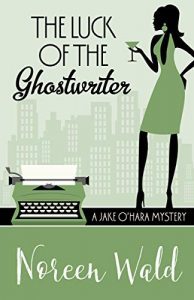 The Luck of the Ghostwriter by Noreen Wald:
The Luck of the Ghostwriter by Noreen Wald:
Jake O’Hara and her colleagues are looking forward to a complimentary weekend in Manhattan’s swanky Plaza Hotel, the venue for the Greater New York Crime Writers’ Conference. The conference kicks off on St. Patrick’s Day, making the atmosphere a bit more festive—and chaotic—than usual. But things get way out of hand when senator-turned-writer Charlie Fione and actress-turned-writer Holly Halligan partake of some green beer—that leaves them permanently green around the gills.
Now Jake’s Irish eyes are far from smiling as she delves into a mystery and tries to rewrite a murderer’s plot—as only New York City’s finest ghostwriter can.
 Send to Kindle
Send to Kindle
March 12, 2020
Star Trek Picard visits “Nepenthe” and catches up with some old friends
Yes, I know this is late, but I wanted to review as many 1945 Retro Hugo eligible stories as possible before the Hugo and Retro Hugo nominations close on Friday. But welcome anyway to my latest episode by episode review of Star Trek Picard. Previous installments may be found here.
Warning: Spoilers behind the cut!
When we last saw Jean-Luc Picard, he and Soji were using the Borg Queen’s emergency transporter to escape from the decommissioned Borg Cube, while the Zhat Vash were closing in. “Nepenthe” picks up where “The Impossible Box” left off, when Picard and Soji arrive on the titular planet, which is almost ridiculously idyllic.
However, Picard and Soji don’t have much time to contemplate the idyllic landscape before they find themselves menaced by a humanoid figure with bow and arrows, a humanoid figure that turns out to be a teenaged girl. Luckily, Picard knows the girl. Her name is Kestra and she is the daughter of Will Riker and Deanna Troi who have retired to Nepenthe following a personal tragedy. For Riker and Troi have lost their son Thaddeus, who apparently was a gifted conlanguer and worldbuilder, to a silicon based viral disease that would have been curable if not for the Federation’s ban on synthetic lifeforms. Of course, this silicon based virus makes zero scientific sense, but then Star Trek is full of nonsense science. And the point is very clearly to illustrate that the Federation’s ban of synthetic lifeforms has consequences beyond depriving the Federation of cheap labour (hey, there’s always prisoners. And no, I’m not going to let that one go) and halting the research of Bruce Maddox and Agnes Jurati.
Though it is horrible that poor Deanna Troi lost two children in her life. Okay, so everybody involved would probably rather forget “The Child”, one of those really, really awful Next Generation episodes, where a ball of glowing light impregnates Deanna Troi and gives her one of those accelerated alien miracle pregnancies, before the resulting child heroically sacrifices himself to save the Enterprise. And indeed Troi and everybody else immediately seemed to forget that this event had ever happened and it was never referred to again. However, Star Trek Picard seems to remember a lot of those really dreadful Next Generation episodes everybody involved would prefer to forget. And so Deanna Troi has lost two children in her life. And considering the tragic death of Icheb the Ex-Borg two episodes ago, I honestly wonder what it is with Star Trek Picard and killing off the children, whether biological or adopted, of established female Star Trek characters.
Troi and Riker welcome Picard warmly, even though he does bring potential trouble to their doorstep. The warmth and friendship in the scenes between Sir Patrick Stewart, Jonathan Frakes and Marina Sirtis feels genuine, probably because it is. After all, these people have known each other for 32 years now and obviously like each other and it shows in their scenes together. And indeed, it’s the warmth between both characters and actors that turns this episode into something special. At any rate, pretty much every reviewer, even those who normally are critical of Star Trek Picard, seems to have liked it, even though “Nepenthe” has very little in the way of plot, even by the standards of Star Trek Picard.
Basically, the bulk of the episode is given over to Picard, Riker, Troi, Soji and Kestra talking and making and eating pizza. Nonetheless, it’s highly enjoyable, which is testament to the skills of both the head writer, Hugo, Nebula and Pulitzer Prize winner Michael Chabon, who is much better at character pieces than the average Star Trek writer, and the actors who bring these characters to life. And that’s why we happily spend 45 minutes watching some people eating pizza. Okay, so I may be biassed here, after all I like quiet character pieces and scenes involving food, so “Nepenthe” is right up my ally. But most other folks, even those who don’t much care for Picard, seemed to like it as well.
In his review of this episode, Camestros Felapton points out that Nepenthe is the name of the drug of forgetting and curing sorrow in the Odyssey. Camestros also points out that scholars believe that the Nepenthe mentioned by Homer was borage, which contains alkaloids and is a crucial ingredient of the famous Frankfurt green sauce, which is traditionally served with asparagus. Which reminds me that I should make some, when asparagus season starts up, provided I can find the required herb mix locally. And no, I’m not sure what this has to do with Star Trek Picard, except that “Nepenthe” is a very food-centric episode and that I suspect that you could probably find the necessary ingredients of Frankfurt green sauce in Troi’s vegetable and herb garden.
Riker and Troi quickly figure out what’s up with Soji, Troi because she cannot read Soji and Riker because she reminds him of Data. Meanwhile, Kestra isn’t all that interested in Picard, even though he is the greatest captain ever according to her father. But then, what approx. fifteen-year-old girl would be interested in an old man who used to be a friend of her parents? However, Kestra is very interested in Soji and peppers her with questions. “Are you related to Picard? Is he your Dad? Is he your Granddad?” Picard finally tells Kestra that Soji is the daughter of an old friend, but that doesn’t satisfy Kestra either, she wants to know which friend. “I suppose you’ve heard of Commander Data”, Picard says, whereupon Kestra blurts out, “So you’re an android?”
But while Kestra’s lack of tact can be forgiven, Picard, who really should know better, is not exactly tactful either. And so he grossly underestimates how traumatised Soji is (to be fair, Picard probably has no idea about the relationship between Soji and Narek) and how her raging paranoia is the result of that trauma. On the other hand, Deanna, who is a psychologist after all, quickly realises that Soji is deeply traumatised and even tells Picard off for being insensitive. But then, Picard has never been someone who’s particularly good with emotions.
Meanwhile, Kestra, who is obviously lonely and also still mourning the loss of her brother, thinks that Soji is the coolest person ever and that being an android must be so awesome, even if Data always wanted to be human, something Kestra cannot quite comprehend. The bonding between Kestra and Soji is lovely to watch and I can’t be the only one who’d be up for Star Trek: The Next Next Generation, featuring Wesley, Alexander, Kestra, Soji and the kid of Miles and Keiko O’Brien. Hell, maybe they could even bring in Elnor, since he seems to have sort of adopted Picard.
Over pizza, Picard, Riker, Troi and Soji figure out what Elnor was after, namely the location of Soji’s “homeworld”. “You have a homeworld”, Kestra, who like her brother was born in space and didn’t really have a homeworld until Nepenthe, exclaims. Kestra also figures out where that homeworld is with the help of a neighbour she has befriended. So now Picard and Soji and the La Sirena crew know where they have to go next.
Talking of which, the La Sirena crew has problems of its own, because the Romulans are firing at them. Rios manages to go to Warp and escape, but he and Raffi quickly realise that they are being trailed by what turns out to be a very pissed off Narek, who has a new fidget toy now that his magic box has presumably been destroyed by Soji.
Meanwhile, Agnes Jurati is still traumatised from everything that happened, including killing Bruce Maddox. Agnes also stars in the traditional flashback at the beginning of the episode, where we finally see what happened when Vulcan/Romulan Zhat Vash mole inside Starfleet Commodore Oh payed her a visit a few episodes ago. Oh tells Agnes that she needs her help and asks her to swallow a tracker. Then she shows her horrible, if way too quickly flashing images, of explosions, destructions and androids via a mind meld. So is Oh a Vulcan sympathising with the Romulans or can Romulans now mind meld, too? After Commodore Oh breaks contact, Agnes promptly vomits onto her shoes? This never happened to Spock.
Being a lot more perceptive than Jean-Luc Picard, both Raffi and Rios that something is wrong with Agnes, especially since Agnes – who wanted nothing more than to meet a real-life android – just wants to go home now. So Raffi feeds Agnes some red velvet cake from the replicator and tries to figure out what’s wrong. “Is it Rios?” she asks, so Raffi noticed that Rios and Agnes slept with each other as well, even though she was drunk and high at the time. Agnes shakes her head, so Raffi asks, “It’s Bruce Maddox, isn’t it?” which triggers yet another impressive vomitting fit. “Is that blood?” Rios asks, before he takes Agnes to the sickbay.
As far as I know this is the first time we’ve seen someone vomit in Star Trek. But then, vomitting is one of those things you apparently cannot show on US network televisions for unfathomable reasons, so they needed the freedom of streaming to be able to show someone puking onto a starship deck. Furthermore, Rios apparently has a lot more faith in Federation medical science than me, because he doesn’t even slightly panic when a woman he slept with suddenly starts vomitting all over the place.
Meanwhile, Narek is still trailing the La Sirena and Agnes realises just how he’s doing it. And so, when Rios and Raffi leave her alone to try and shake of Narek, Agnes uses the replicator to synthesise a neurotoxin which knocks out the tracker and puts Agnes into a coma, when she injects it into her neck. So now the La Sirena is free of Romulan pursuit, but also short one crew member.
Or make that two, because Elnor is still on the decommissioned Borg cube after covering Picard and Soji’s escape. Elnor managed to get away, but Hugh was captured and is being interrogated by Narissa who has one of her subordinates shoot the Ex-Borg Hugh has helped to save in an attempt to get him to talk. Hugh, however, doesn’t give away Picard and Soji’s destination. So Narissa orders all of the Ex-Borg killed. Elnor intervenes and fights Narissa, but both the Ex-Borg and Hugh are killed in the resulting fight. Killing off Hugh feels very much like a waste, especially since his death is mainly intended to royally piss off Elnor. First Icheb and now Hugh – what is it with Star Trek Picard fridging Ex-Borg?
Elnor is understandably furious that he wasn’t able to save Hugh and the other Ex-Borg. He hides away on the cube, unsure what to do now. Then he suddenly holds the com device Seven of Nine had given Picard, the device which will call in the Fenris Rangers, in his hand and activates it. From the trailer, it looks as if we will be seeing more of Jeri Ryan as Seven of Nine, which is always welcome. And is it just me or has Elnor latched on to Seven? On the other hand, he was raised by Romulan warrior nuns, so it makes sense that he would seek out the closest thing to his “mothers” when left alone in the universe.
“Nepenthe” is a lovely character piece about old friends eating pizza and new not-quite friends eating red velvet cake. The gore and the Ex-Borg murders are a bit incongruous, though.
 Send to Kindle
Send to Kindle
Retro Review: “The Huddling Place” by Clifford D. Simak
Is it me or are some of the 1944 covers of Astounding Science Fiction really bad?
“The Huddling Place” is a science fiction short story by Clifford D. Simak, which was first published in the July 1944 issue of Astounding Science Fiction and is therefore eligible for the 1945 Retro Hugos. The magazine version may be found online here. “The Huddling Place” is part of Simak’s City cycle and has been widely reprinted.
This review will also be crossposted to Retro Science Fiction Reviews.
Warning: Spoilers beyond this point!
“The Huddling Place” starts off with the funeral of one Nelson F. Webster. It might be a scene in any contemporary set story, if not for the fact that the pallbearers are robots and that Nelson F. Webster died in 2117, aged eighty-three.
Our narrator is Jerome A. Webster, son of the late Nelson F. Webster, and one of only three Websters still left alive. The other two are Jerome’s son Thomas, who will soon be leaving for Mars, and Jerome’s mother, who never gets a name. In the course of the funeral, We also get a brief rundown of the Websters (and a Webster father-in-law, William “Gramp” Stevens who is an important character in the first “City” story published earlier the same year) interred in the family crypt on the Webster estate. Again, only one woman is mentioned, Mary Webster, Jerome’s late wife.
For four generations now, the Websters have lived on a spacious estate with whispering pine trees, meadows, a rocky ridge and a stream full of trouts, ever since John J. Webster, great-great-grandfather of Jerome, moved there after humans abandoned cities in the twentieth century in favour of what the characters consider gracious living on huge lots of land, served by a small army of robots.
The story follows Jerome through his day, as he retreats into his study to mourn his father, not even bothering to say good-bye to the priest who conducted the funeral service. Instead, Jerome leaves the Websters’ faithful robot butler Jenkins to deal with the priest, just as he leaves him to deal with everything else.
We learn that Jerome never leaves his house, even though he spent several years as a doctor on Mars in his younger days. Nowadays, however, Jerome doesn’t see any need to leave his house. After all, modern technology allows him to speak to anybody, virtually visit any place, attend a concert or play, browse a library and conduct any business he might want to conduct, all from the comfort of his home. This short paragraph is probably the most prescient thing published in Astounding in the entire year of 1944, because the Internet allows us to do all of that from the comfort of our own home as well. Though I hope that most of us react to those possibilities a little differently than Jerome.
Jerome’s contemplations are interrupted by a virtual visit from an old friend, the Martian philosopher Juwain whom Jerome met during his time as a doctor on Mars. Juwain has come to pay his respects to the late Nelson F. Webster and also to ask why Jerome never physically returned to Mars for a visit, even though the Martians owe him a great debt, because Jerome wrote the book on Martian medicine. For we learn that the Martians never really had doctors before the humans arrived. Instead, they simply accepted illnesses as fatal. Meanwhile, Martians have come up with orderly and logical philosophy that may be applied as a practical tool, rather than the fumbling human attempts at philosophy. And Juwain is about to make a further breakthrough in philosophy, a breakthrough that will help both humans and Martians. A. Williams’ interior art depicts Juwain as a being with flimsy tentacle-like limbs and a huge domed head, which certainly suggests a species of philosophers.
This is not the first time in Astounding in the 1940s that different races and species are given different specialisations they are inherently suited for. Something similar can be found in the Jay Score stories by Eric Frank Russell, one of which – “Symbiotica” – was a finalist for the 1944 Retro Hugo. Though it’s certainly interesting that the superior Martian philosophy is orderly, logical and practically applicable, i.e. it is a type of philosophy that would have appealed to John W. Campbell. Meanwhile, humanity still gets to be superior, if only because medicine is a much more vital field than philosophy for the survival of any species.
The story picks up again at a spaceport, where Jerome sees his son Thomas off to Mars. Jerome can barely keep himself from begging Thomas to stay on Earth. Once the spaceship carrying Thomas to Mars has lifted off, Jerome suffers the mother of all panic attacks. He barely makes it across the open stretch of concrete back to the terminal building, where he huddles on a chair near the wall, terrified of the noise and the strangers all around him.
Jerome is desperate to return home at once, so he can feel safe again. However, the faithful robot butler Jenkins informs him that they can’t leave just yet, because the Websters’ private helicopter is in need of repair. Jerome freaks out even more. “I understand, sir,” Jenkins says, “Your father had it, too.”
Now Jenkins reveals that crippling agoraphobia apparently runs in the Webster family and usually sets in at around fifty. That’s the true reason why Jerome as well as all the Websters before him never leave their estate. Because they cannot.
Being a doctor, Jerome conducts an experiment and invites some two-hundred and fifty men (Simak’s word choice, not mine) to visit him. Only three of those invited actually show up, which suggests to Jerome that more and more of humanity (well, the male half) is succumbing to the same crippling agoraphobia that has affected him. This is, Jerome assumes, the result of humanity’s lifestyle living far away from each other on huge tracts of land, where they feel so comfortable that they simply cannot bear to leave the familiar surroundings, unless they absolutely have to. And maybe not even then.
Jerome’s theory is tested when he gets a call from a man called Clayborne, an old acquaintance from Mars. Clayborne works for the Martian Medical Commission and has contacted Jerome with an urgent request. After all, Jerome is the leading expert on the Martian brain and Clayborne has a patient who urgently needs a brain operation, an operation only Jerome can carry out. And that patient is none other than Jerome’s good friend Juwain who has been asking for Jerome.
“You’ll bring him here?” Jerome asks, only to be informed that Juwain cannot be moved. Jerome will have to go to Mars to operate him, otherwise Juwain will die.
“But I cannot come,” Jerome tells the increasingly (and understandably) irritated Clayborne. Surely he isn’t really needed, surely someone else can carry out the operation. Clayborne, however, won’t have none of that. He’s sending a spaceship straight to the Webster estate.
Soon thereafter, Jerome receives another call, this time from one Henderson, president of the World Committee, which appears to be the global government in Simak’s future. Henderson also insists that Jerome must go to Mars to save Juwain. Because if Juwain dies, the philosophical breakthrough he was about to achieve, a breakthrough which will advance humanity and Martians by a hundred thousand years, dies with him.
To be fair, Jerome is determined to at last try to go to Mars, even though he is utterly terrified. He also realises that even though humanity may have left the cities behind, they have still psychologically chained themselves to their homes. Finally, he realises that he has to break those chains and leave his comfortable home behind, just as humans left the cities behind some two hundred years before. So Jerome forces himself to pack a bag and promptly suffers yet another panic attack.
His panic attack is interrupted by Jenkins who arrives to tell him about a most extraordinary occurrence. A ship landed at the estate and wanted to take Jerome to Mars.
“They are here?” Jerome asks, “Why didn’t you call me?”
Jenkins declares that he did not want to bother Jerome, because the whole thing was just too preposterous. So Jenkins personally told the men to leave and when they refused, he threw out by force.
Poor Juwain is doomed and humanity will never learn the philosophical revelations he had in store for them. And all because of an overzealous robot butler.
[image error]I enjoyed “Desertion”, the other Clifford D. Simak story I reviewed for the Retro Reviews project, a whole lot and it’s definitely going on my Retro Hugo ballot. I did not like “The Huddling Place” nearly as much. What is more, the story reminded me of what always irritated me about Simak’s stories, when I first read them as a teenager, namely the anti-urbanism.
Now I’m very much a city person and I was even more of a city person, when I was younger. My teenaged self wanted to live in some major international metropolis – London, New York or Paris were my top choices – and literally could not understand that there were people who actually enjoyed living in the countryside or in suburbs or small towns. I always assumed they were forced to live there due to jobs, money issues or families who had the idiotic idea that children should grow up in the countryside. Realising at age fifteen that American suburbs like the ones you always see in horror films were a real thing where real people lived utterly baffled me, because who would choose to live in a horror movie setting?
When I read about city world of Trantor, capital of the Galactic Empire from Isaac Asimov’s stories, I thought Trantor was the coolest place ever and immediately would have moved there, if that had been at all possible. And when I first encountered the City cycle by Clifford D. Simak at around the same time, I thought it was a horrible dystopia where human had abandoned the cities to live on country estates where nothing ever happens and no one ever goes anywhere, because there is nowhere to go. Worse, I strongly suspected that Simak was not aware that he was writing about what to me was a horrible dystopia.
My adult self has a more differentiated view of the City stories. Yes, Clifford D. Simak was clearly not a city person and obviously preferred the countryside. Just as he was obviously a dog person. Indeed, I was stunned that there is no dog anywhere in sight in “The Huddling Place”, because dogs are so prominent in Simak’s fiction, including the City stories.
However, even as early as “The Huddling Place” it is very clear that Simak does not view the cityless world he has created as an unalloyed good (and civilisation does eventually break down in the City cycle and humans die out, while dogs and ants take over the world). After all, Jerome A. Webster is a pitiful person, chained to his home and unable to leave even to save the life of his friend. Furthermore, Jerome is utterly dependent on Jenkins and the other robots. It isn’t Jerome himself who makes the fatal final decision, Jenkins makes it for him.
I vaguely remembered that the way the humans treated their robots as slaves to run their oversized estates was one of the things that annoyed me about the City cycle. However, upon rereading the story, I realised that it’s not so much the humans who are enslaving the robots. Instead, it’s the humans who are slaves to their robots. Furthermore, I also remembered Jenkins as wholly positive figure fully in the “robot as pathos” range, to quote Asimov’s classification of science fictional robots. But upon rereading, I found Jenkins an almost sinister figure. Does he truly have the best interests of Jerome and the other Websters at heart or is he slyly making Jerome even more reliant on him? After all, if not for Jenkins, it’s quite possible that Jerome might have managed to overcome his fears and gone to Mars after all.
[image error]Agoraphobia is another theme that keeps popping up during the golden age, particularly among writers in the orbit of John W. Campbell and Astounding Science Fiction. Isaac Asimov, who suffered from agoraphobia himself, addressed the issue several times, most notably in the Elijah Baley and R. Daneel Olivaw novels. Asimov’s 1953 science fiction murder mystery The Caves of Steel is set on a future Earth that is pretty much the opposite of the world from Simak’s City stories. Here, humanity has retreated to huge domed cities and is terrified of any open space. The 1956 sequel The Naked Sun, meanwhile, is set on a world of suburban sprawl that is even more extreme than that of “The Huddling Place”. Here, too, humans live on huge estates tended by robots. But in The Naked Sun, the Solarians not only refuse to leave their palatial homes, they also cannot bear to be in the physical presence of other humans, even members of their own families. Indeed, the similarities between “The Huddling Place” and The Naked Sun are so pronounced that I wonder whether both stories aren’t the result of one of John W. Campbell’s infamous writing prompts.
It’s also interesting to view both “The Huddling Place” and The Naked Sun in the light of the trend towards suburbification after World War II. Because in the 1950s and 1960s, people all over the western world really did turn their back on cities in favour of suburbs built on what had been fields and meadows only a decade before. Of course, those people were far more likely to end up in a Levittown shoebox or a “garden city” housing estate than on a huge multigenerational estate like the Webster home. On the other hand, the McMansions that were popular in the US from the 1980s into the early 2000s do seem to show a trend towards a scaled down version of the Webster home. And while humans post WWII did not actually succumb crippling agoraphobia, people did stop going to cinemas, theatres, restaurants, bars, etc… for a while, preferring to stay at home and watch TV and have dinner parties in the privacy of their own homes. Suburbification is mainly associated with the postwar era, but now I wonder whether those trends were already noticeable in the 1930s and early 1940s and whether stories like “The Huddling Place” and The Naked Sun were a type of “If this goes on…” speculation.
In the real world, the trend towards suburbification and people retreating into the privacy of their homes eventually reversed, as younger people moved back into the cities, once derelict city neighbourhoods became extremely desirable places to live, while some suburbs withered and became places for old people, families and those who can’t afford to live in the city. Just as people started going out again and cinemas, theatres, restaurants, etc… rebounded. Furthermore, the postwar trend towards suburbification was a purely western phenomenon anyway. Beyond the western world, people continue to flock to the cities, because that’s where the jobs, the opportunities and the facilities are.
Indeed, the world Simak describes in “The Huddling Place” and the other City stories is pretty much unsustainable. It’s simply not possible for people to take up so much space, unless the world population has been drastically reduced. And in fact, I always assumed that only a minority of people, mainly in the US, lived like the Websters, while life and cities go on as normal in the rest of the world. And considering how very few women there are in the City stories, I also wonder whether women didn’t continue as normal, maybe even happy that the men had walled themselves up.
In many ways, “The Huddling Place” is a very American story. Now many of the stories I reviewed for the Retro Reviews project feel very American, but “The Huddling Place” is an extreme example, since the story’s idea of gracious country living is very American phenomenon. “The Huddling Place” is an early example of what Joanna Russ would eventually call galactic suburbia science fiction and one of the comparatively few that was written by a male author.
Since “The Huddling Place” is a Clifford D. Simak story, it is beautifully written. The nature descriptions do their best to make the reader understand just why Jerome loves his plot of land so much. The panic attack scenes are visceral and will bring back unpleasant memories to anybody who ever suffered a panic attack.
In fact, “The Huddling Place” feels more like a work of mid-century literary fiction than like the sort of hard science fiction normally found in the pages of Astounding. Maybe that is why John W. Campbell felt the need to add a blurb announcing that this story is an important extrapolation of social trends. In fact, if Jenkins and the other robots had been replaced by human servants, the spaceport with an airport or train station and if the dying Juwain had resided in a different country rather than on Mars, “The Huddling Place” wouldn’t have felt out of place in a 1940s issue of the Saturday Evening Post or the New Yorker.
A tale about crippling agoraphobia and the dangers of suburbification with rather sinister undertones for such a quiet story.
 Send to Kindle
Send to Kindle
Cora Buhlert's Blog
- Cora Buhlert's profile
- 14 followers


